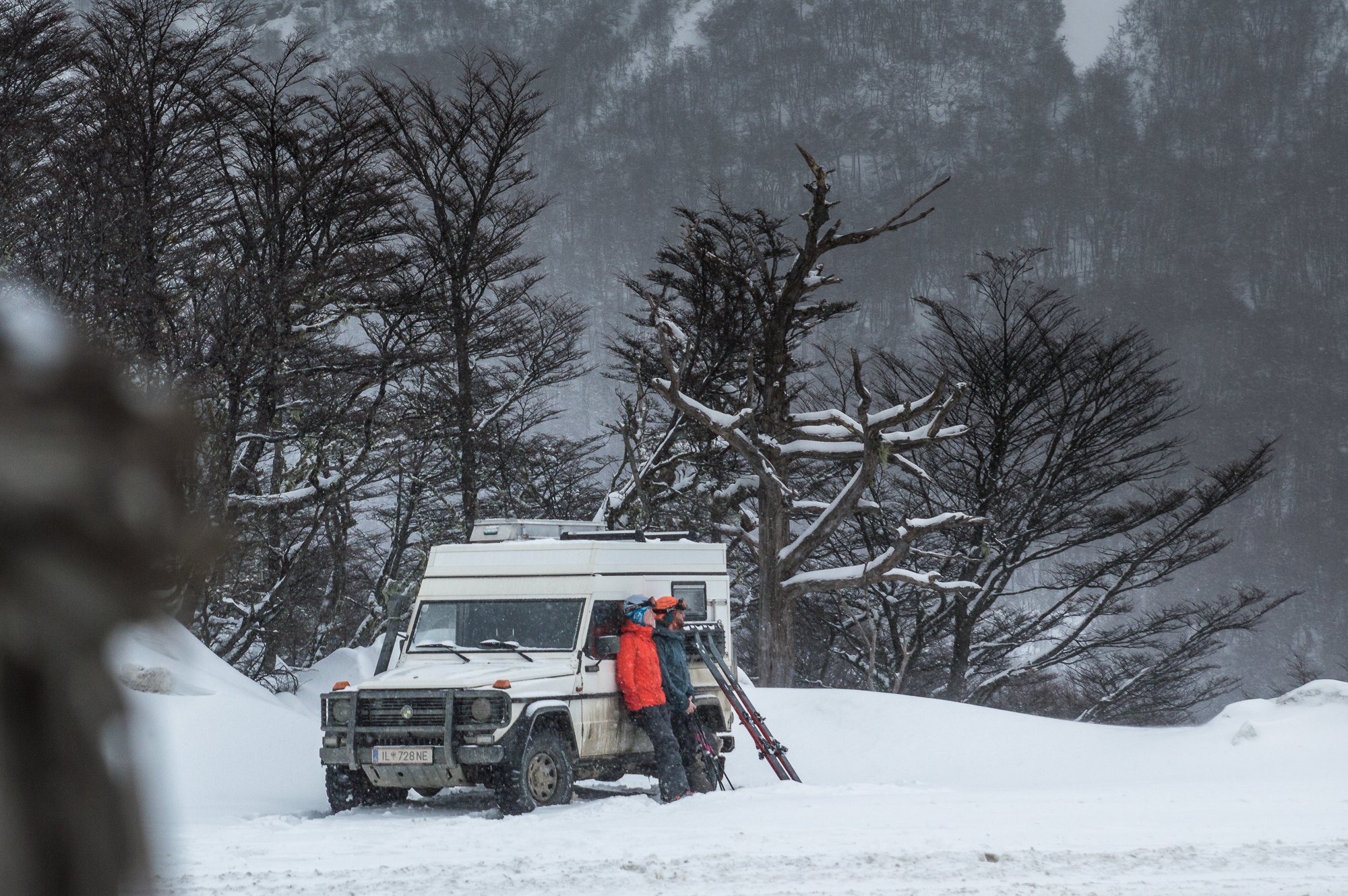Many overlanders find that much of the fun begins once the shifter is secured in Park. For Austrians Birgit and Klemens (known online as 4×4 Panda), their 1998 Puch 290 GD Mercedes G-Wagon is the vessel that transports them to trailheads, crags, and ski hills, where they mountaineer, ski tour, and rock and ice climb. These grueling but rewarding adventures require appropriate gear: spiky crampons, a glimmering ice ax, helmets, meters of climbing rope, Gore-Tex outerwear, a four-season ground tent, sturdy mountaineering boots, and so on.
We often pack according to our priorities, and when traveling long-term, sacrifices must be made to make room for the items most important to us. Birgit and Klemens previously toured through Turkey, Iran, and Kyrgyzstan in an old Fiat Panda, so they’re no strangers to small spaces. Currently exploring South America in their custom-built G-Wagon, the couple knows a thing or two about making the most of a tiny interior without compromising on essential gear. Here’s a glimpse into the interior of Birgit and Kelmens’ 1998 Mercedes G-Wagon.
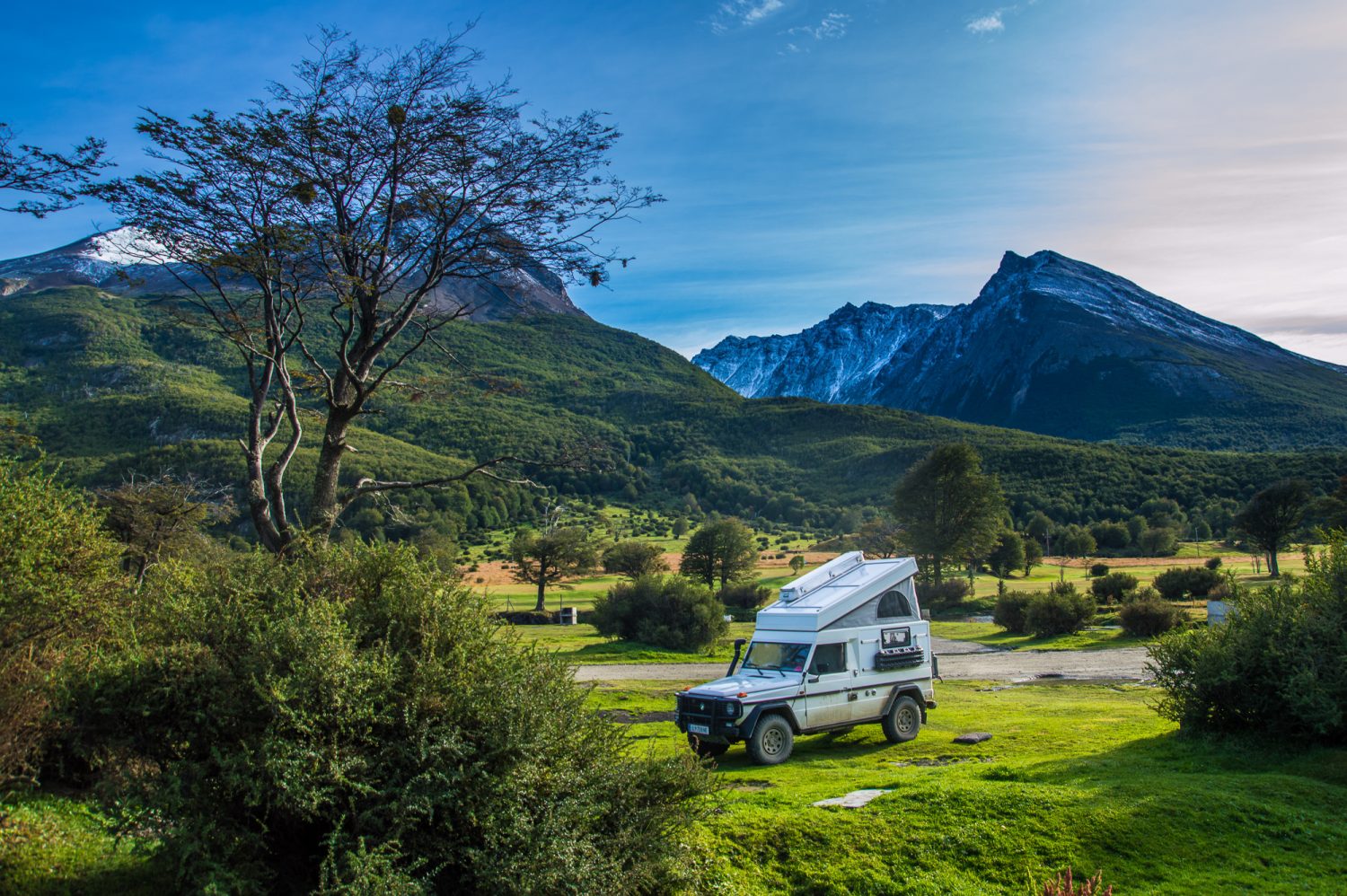

Sleeping Quarters
“We built our camper, so we were pretty free in the design. We decided to go with a pop-up roof for several reasons: to maintain our vehicle’s off-road capability and to be able to stow our camper in a container. We didn’t want it to be too high. Since a roof tent offers us no advantage over a pop-up roof, we decided to go for that. We can increase the living space inside in a second (being able to stand up in the car changes everything), put up the roof even in strong winds, and do not have to leave the car to go into the tent. Besides, it offers us a far bigger bed than the one below. It was especially important that daily living, cooking, and sleeping are also possible when the roof must remain closed, whether because of weather [or being] in cities—this worked out great. For our next camper, we will build a complete cabin but stay with the pop-up roof.
Since we each have two different sleeping bags for mountaineering, we did not want to pack extra bedding. However, we use [the bags] in the car as blankets, and to increase comfort, we have the sleeping bag with a comforter cover and the mattress covered with a sheet. So, except for the fact that the sleeping bag gets a little tighter at the bottom, it feels like normal bedding. During the day, we stow the sleeping bags loosely in two large cotton bags in the alcoves over the driver’s cab.”

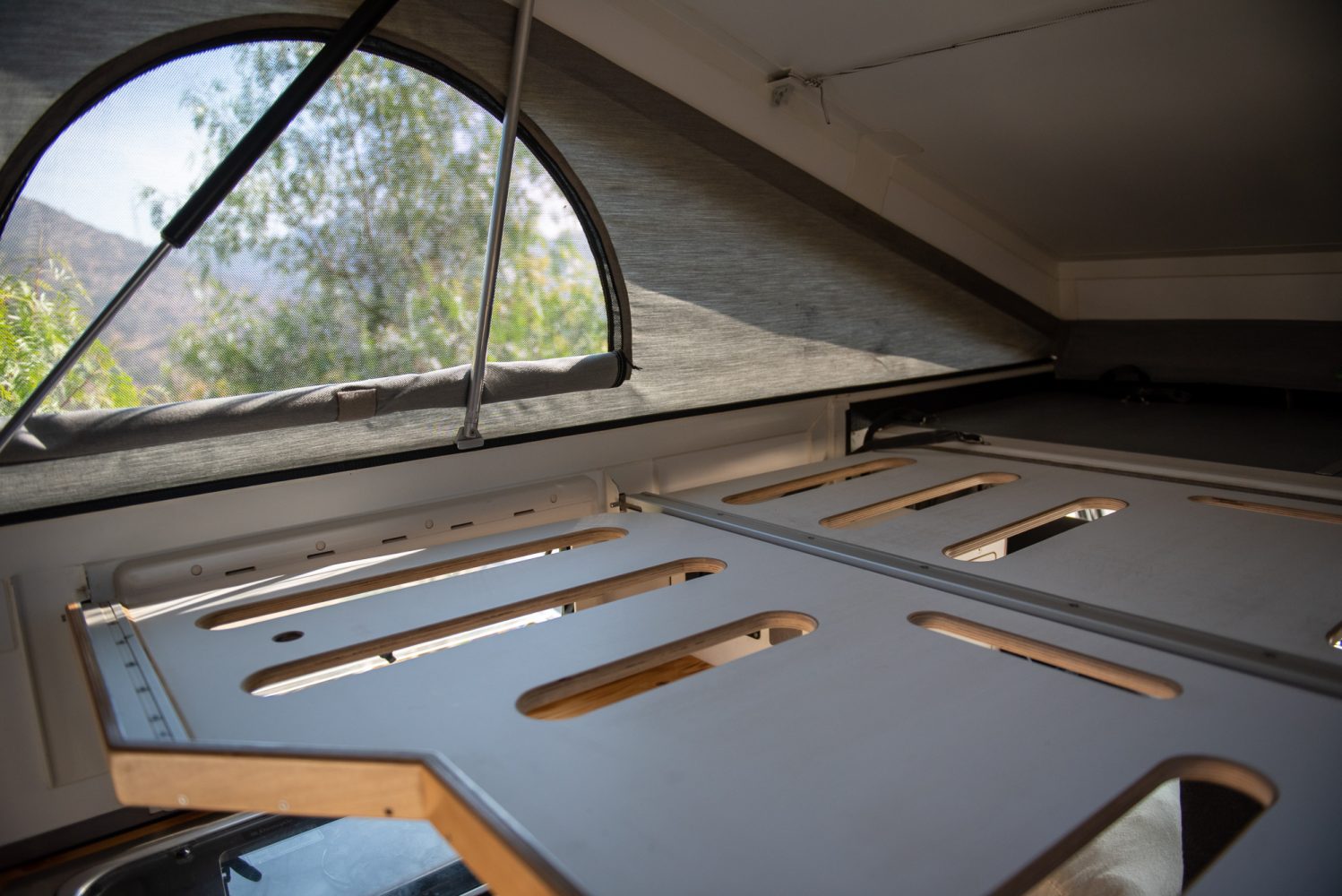

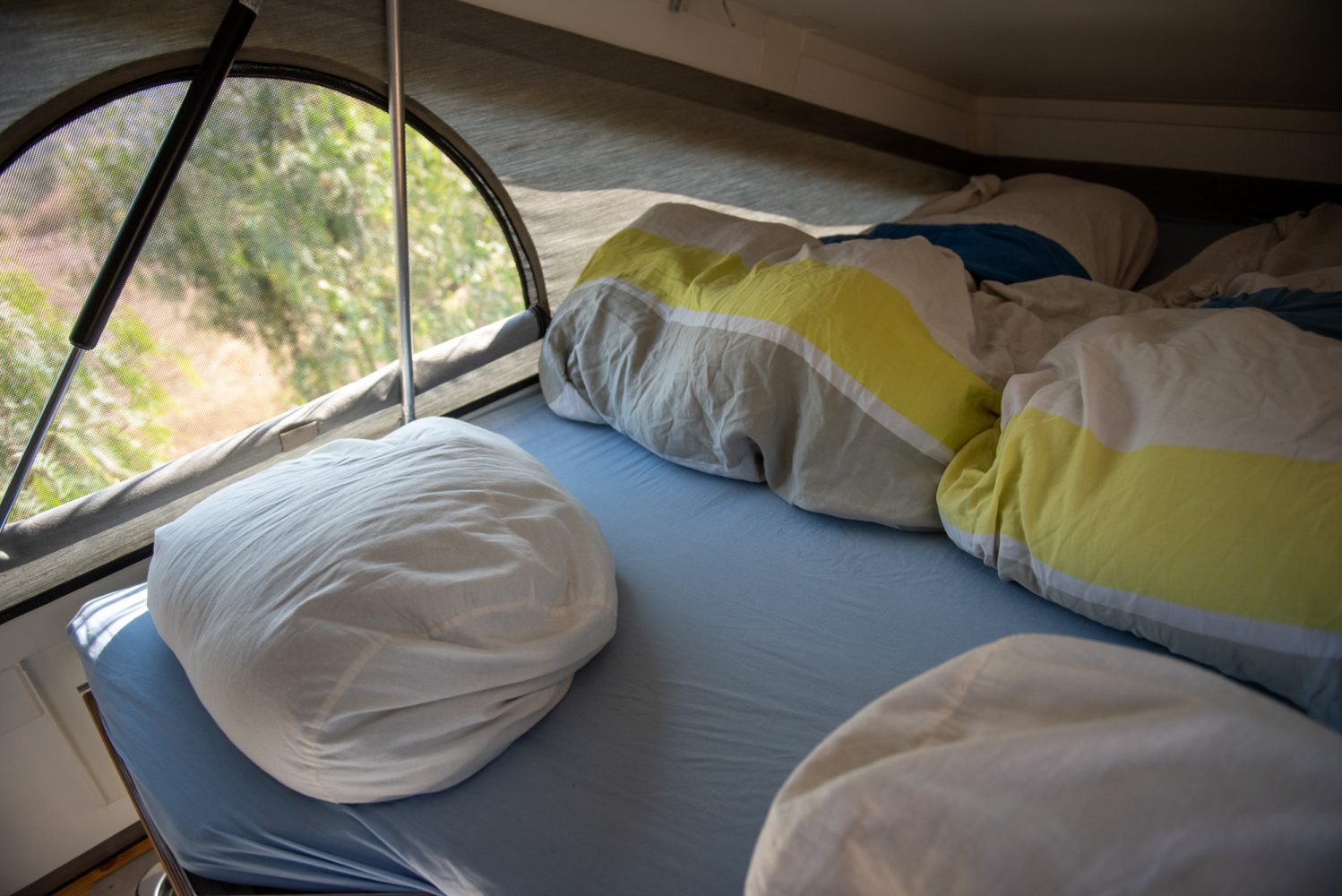
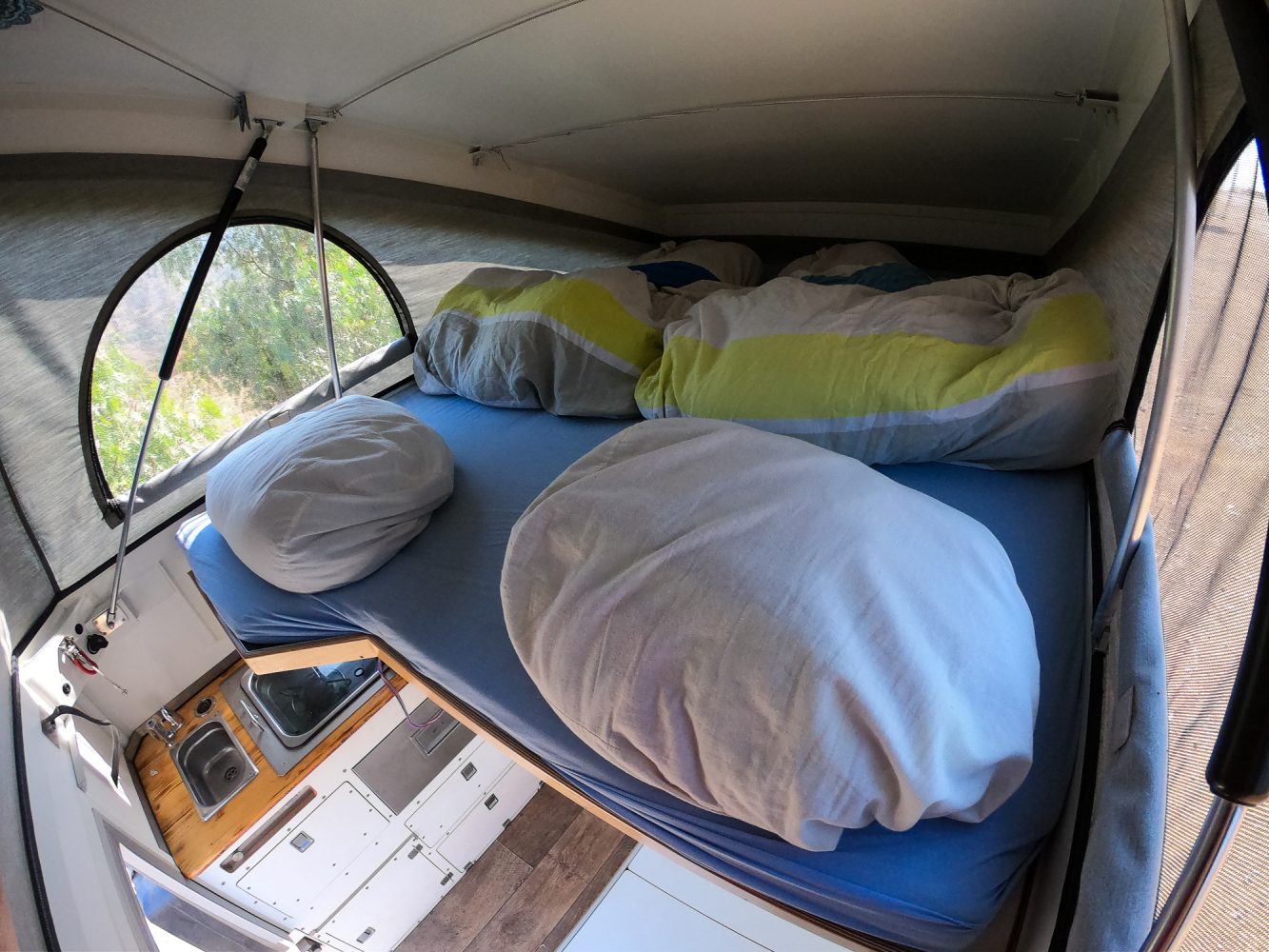
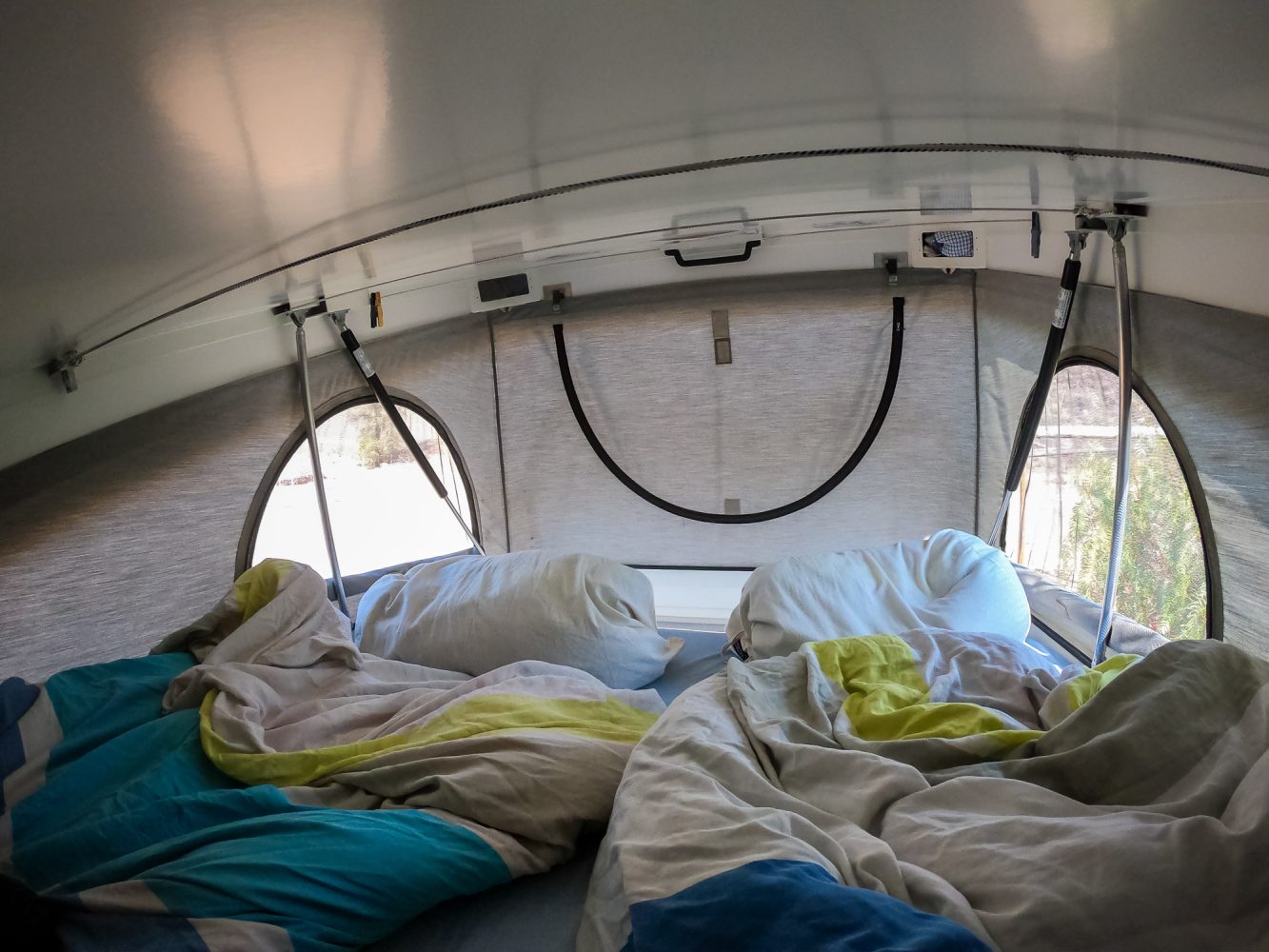
Kitchen Items, Food, and Water Storage
“We have a two-burner propane stove recessed into our kitchen countertop that we can also remove to cook outside. The propane is located separately in a sealed compartment next to the entrance. There we have a 3-liter and a 1-liter bottle, which we can also refill ourselves. Below [the countertop], there are several drawers. In the biggest one, we store all of our cooking utensils like pots, dishes, [and] cutlery. Most of it is made of stainless steel, convenient for camping and cleaning. This setup works perfectly for us, but there is always room for improvement. For example, we have a large pressure cooker to cook at high altitudes. There we would look for a smaller alternative.


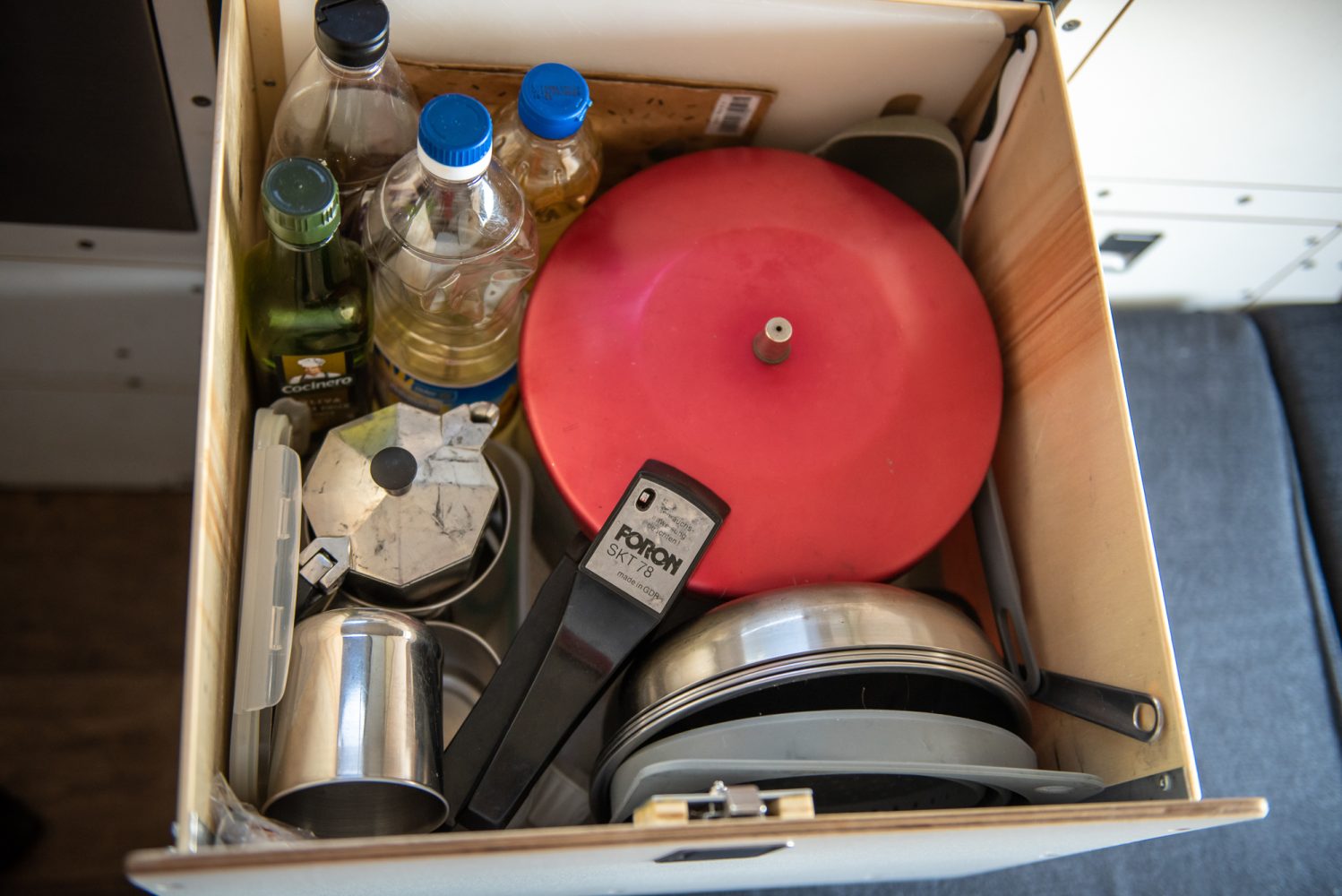
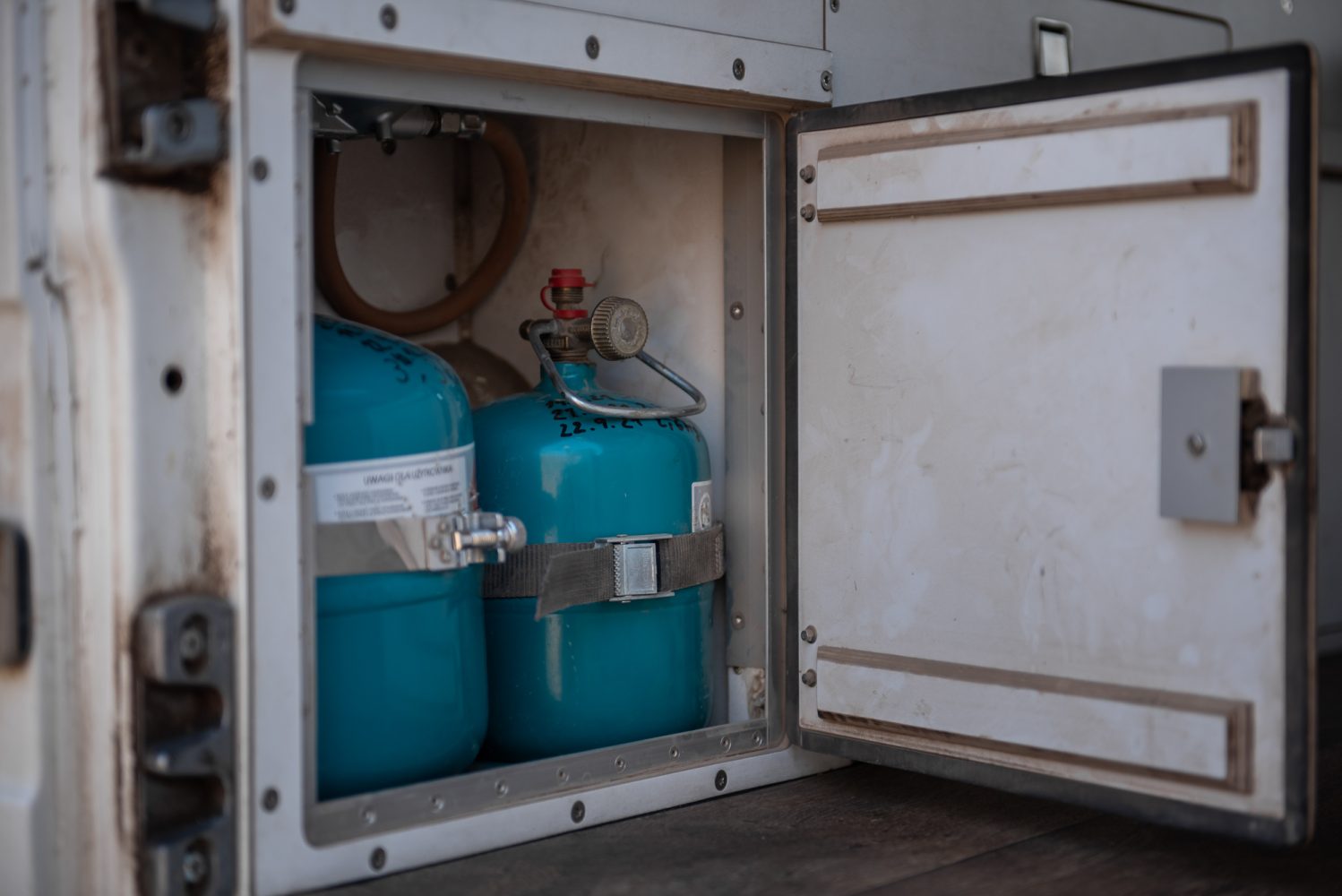
When you are on the road for so long, you need space for food. For refrigerated [items], we opted for a built-in compressor refrigerator drawer from Dometic Waeco. Although it is energetically somewhat less favorable than a box, it is very space-saving, and we are super happy with it. In the drawer below, vegetables and spices are stored. Since that is not enough, we have additional storage for cans, etc., in one of our seat boxes by the door. We have divided the box and stowed things underneath that we rarely need. Everything else, [including] large items, bottles, and drinks, [go] in the small corner cabinet under the kitchen drawer. Even though we have a lot of space for food, when we head out for more than a week, we have to store some of the fresh vegetables and fruits in an additional bag.
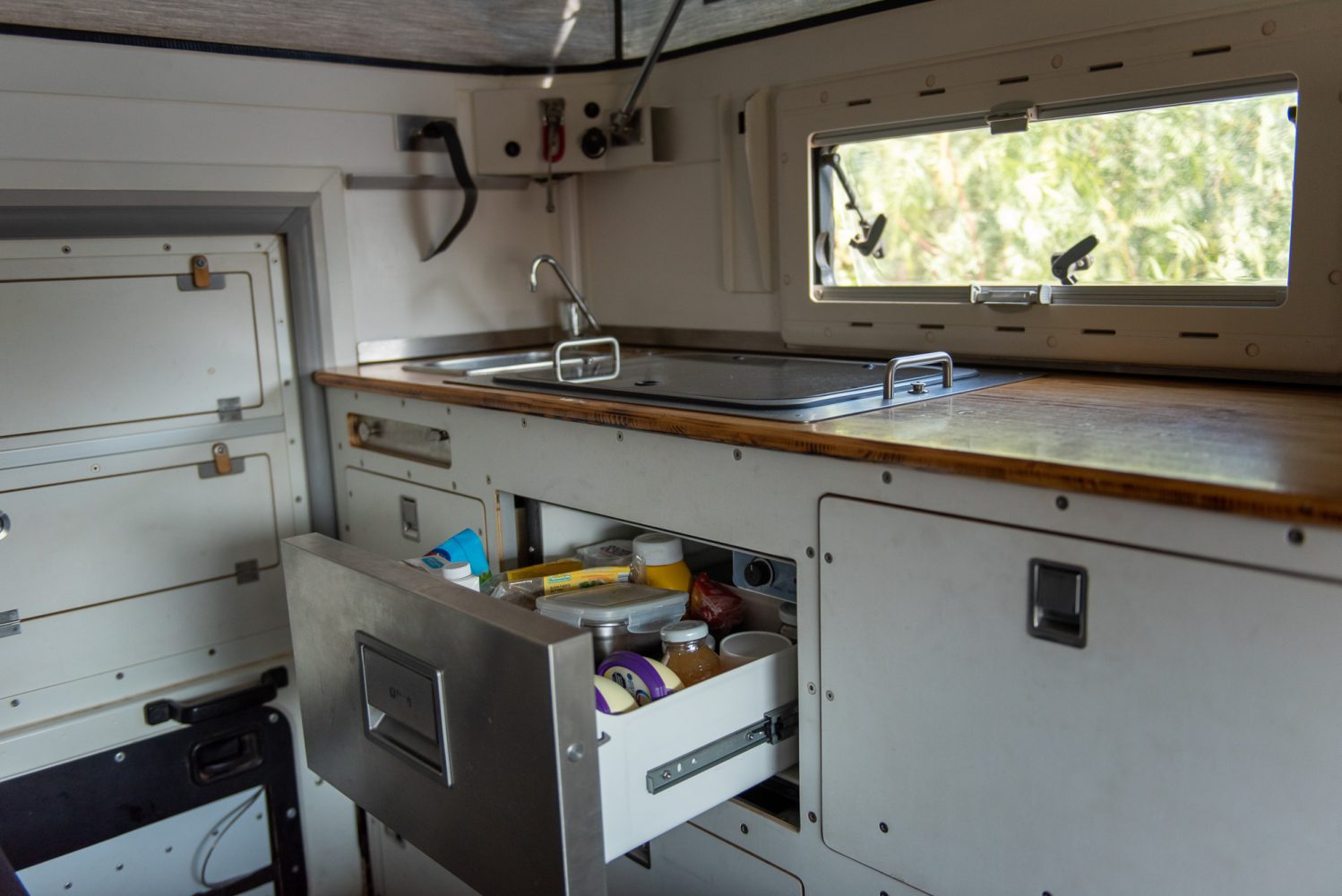
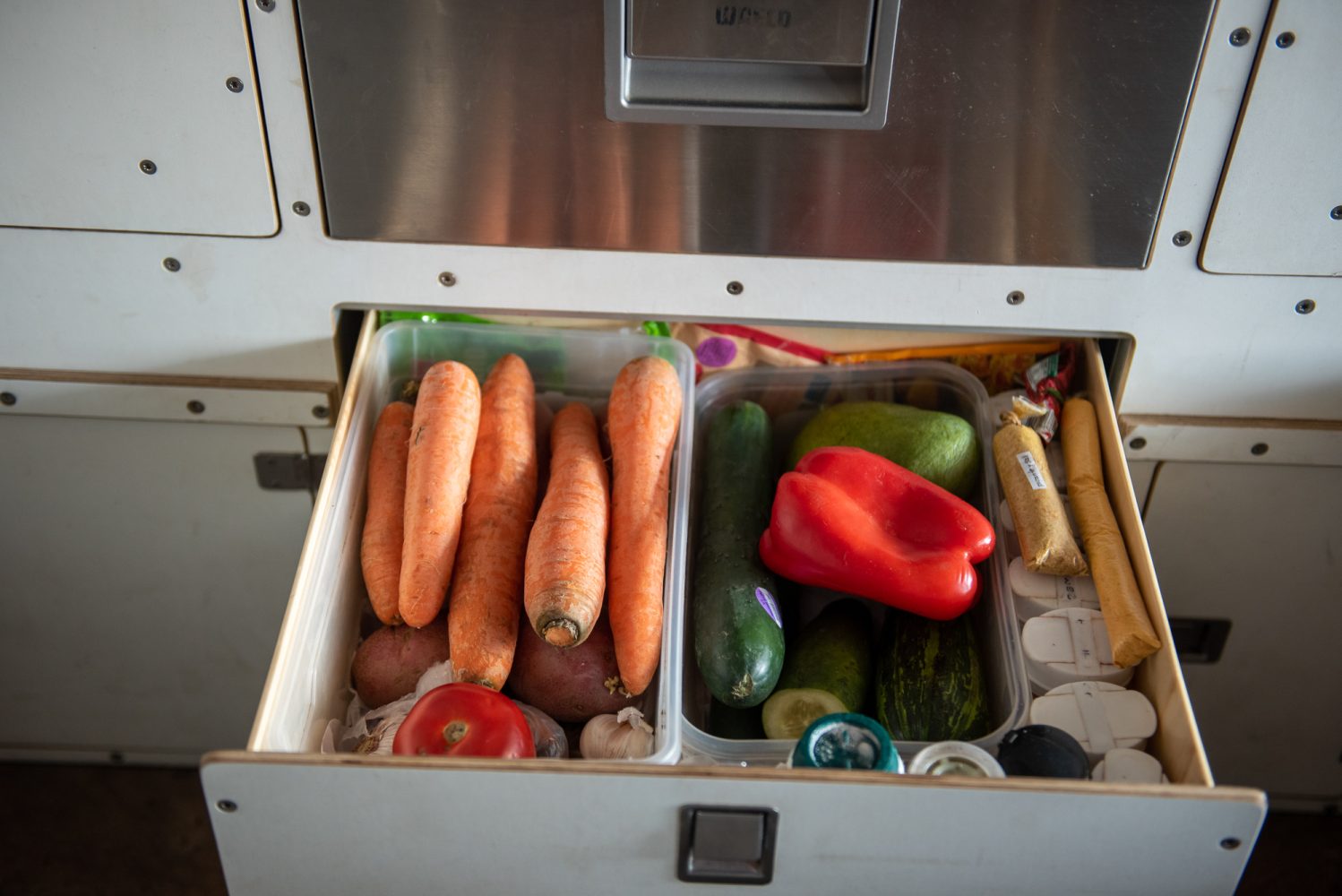

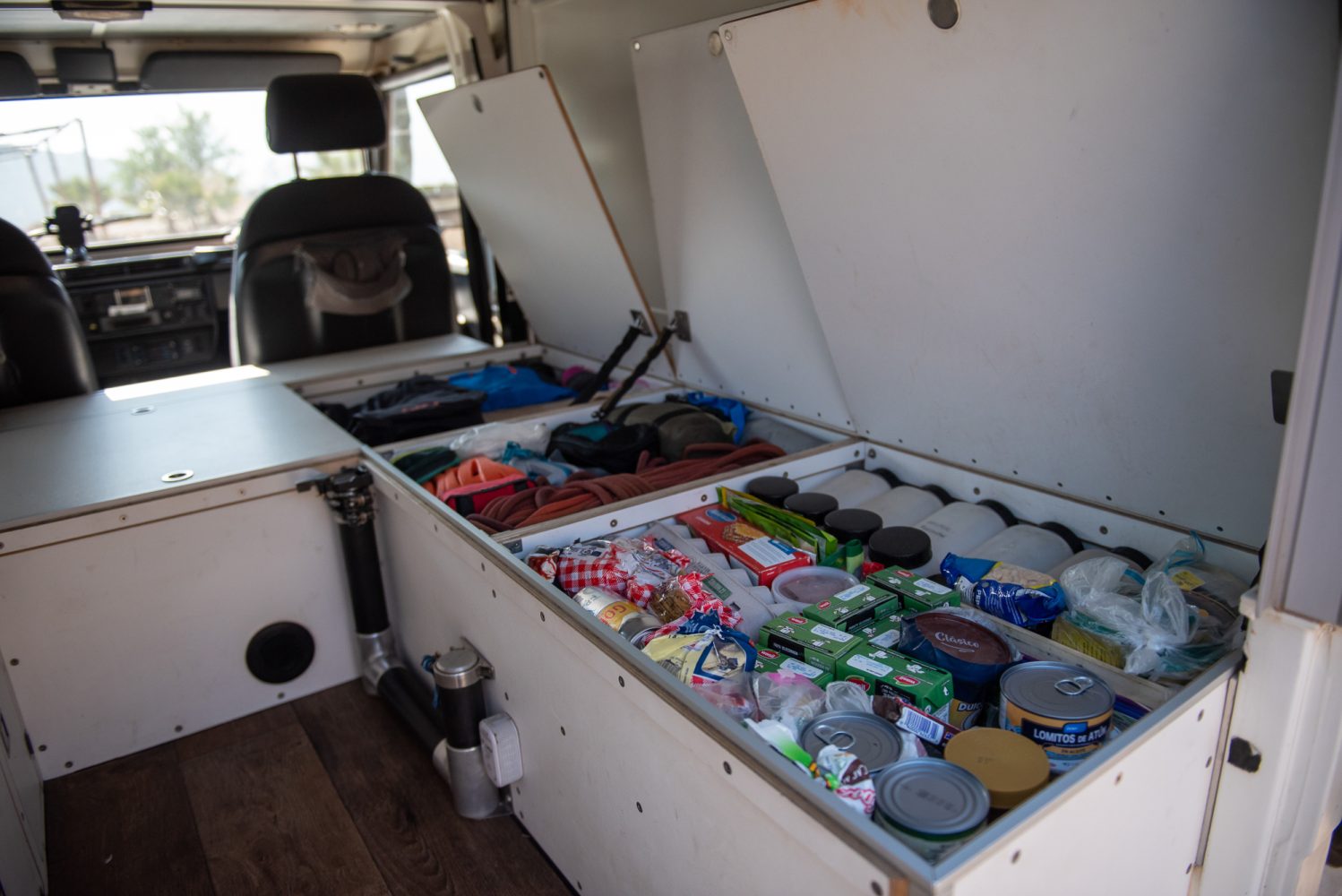
Under the car, we have a homemade aluminum tank, which holds about 45 liters of water that we use mostly for cooking, doing the dishes, [and] showering. In addition, we have an insulated stainless steel hot water tank in the front fender, which is heated by the engine heat while driving.
For drinking water, we use two 20-liter Front Runner jerry cans made of polyethylene attached to the outside of the car. We recently started using an Alb filter when filling the tank. In addition, we also have a manual filter from MSR that we use on the mountain and often to filter drinking water. In the future, we want to install the hot water tank/boiler inside the cabin for better insulation. Heating water by using the engine’s cooling system works great, so we want to keep that feature, but we would love to heat the water by using our diesel air heater when not driving.
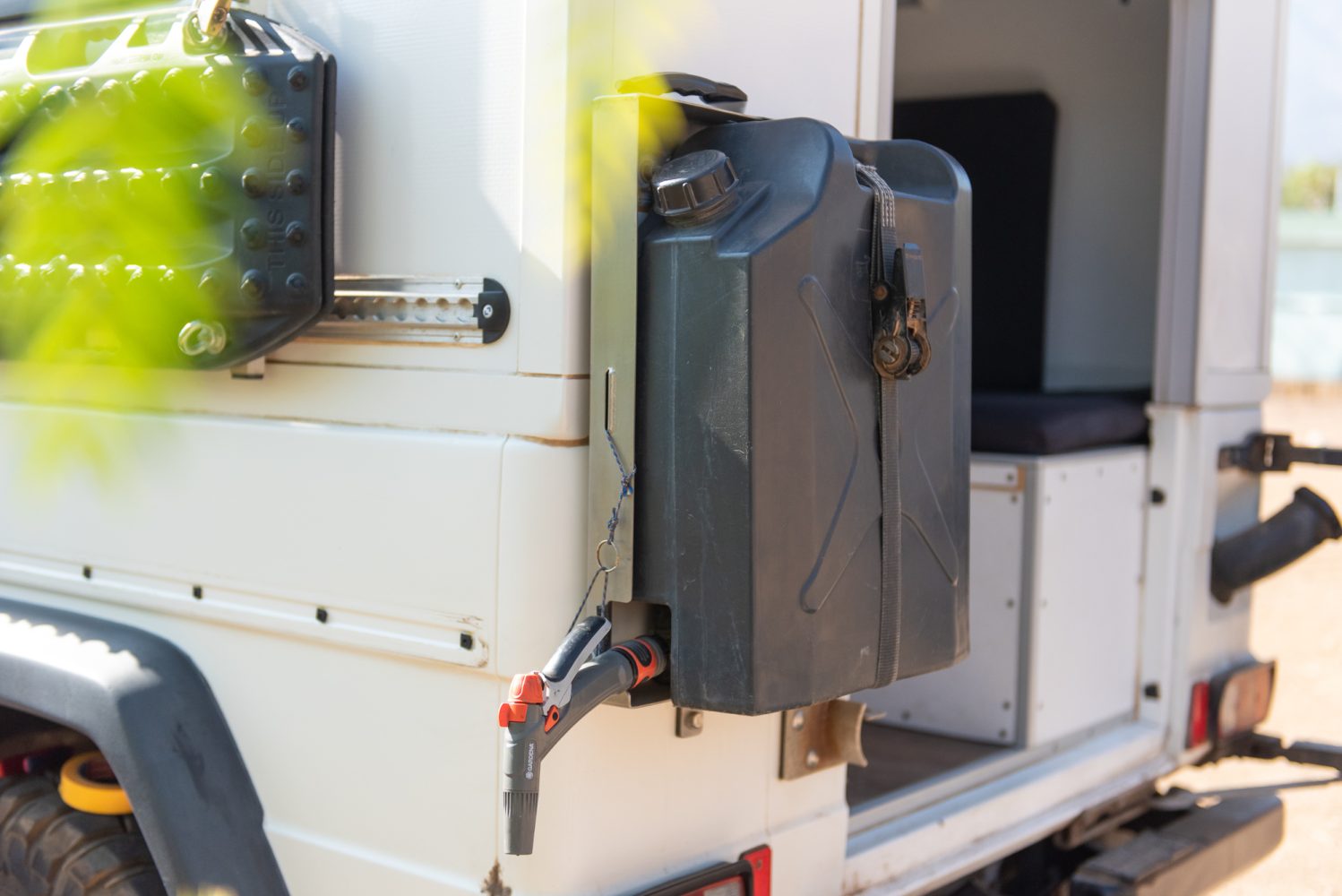

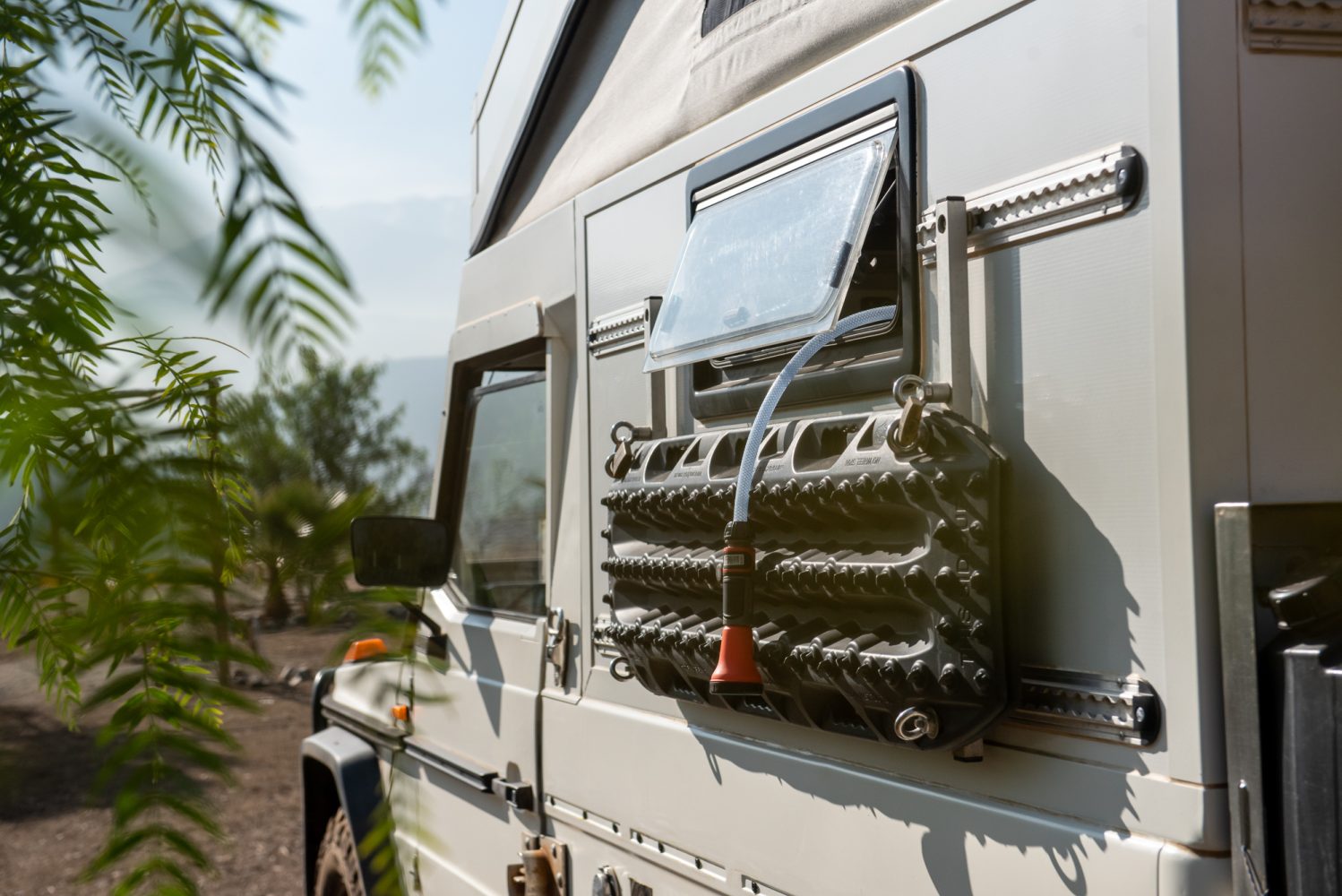
We don’t have an extra place for garbage because we didn’t want to give away any space for it. When we are at camp, we hang the garbage bag on one of the jerry cans in the back and always try to get rid of it as fast as possible.”
Camp Life: Table, Chairs, Clothing, and Toiletries
“Since we do not have much space but still attach importance to having comfortable chairs and a table, we have searched for alternatives with small, packable sizes. Finally, we decided on the foldable chairs from Front Runner. They [are comfortable] and [compact]. However, they are insanely heavy, and although we have used them only a few times, we had to fix them due to bad build quality. But we like the concept in principle; maybe we’ll build some ourselves that are a little lighter.

Finding a foldable table was not easy. Finally, we bought a foldable picnic table at Decathlon and, just before departure, simply extended the legs. It is a bit wobbly but super light and easy to store. The chairs and table fit perfectly in one of our seat boxes in the cabin.


We both don’t have much clothing with us. In our opinion, you can best reduce [space] here, and you have your favorite items you wear all the time anyway. Since we had even less space in our last car, a tiny Fiat Panda, this feels like luxury for us.
Our clothes fit in the small additional compartment in our rear door. We added a small aluminum extension to the door during construction to gain more storage . . . [where] things are always easily accessible. Only the Gore-Tex pants and jackets for hiking are stored separately.
The toiletries are placed in a small drawer under the sink next to the entrance. It was important that everyday objects are always accessible, regardless of whether the roof is open or closed and the bed is built. Clothing, electronics, toiletries, cooking utensils, and the refrigerator [can be accessed] without having to rearrange the cushions.”
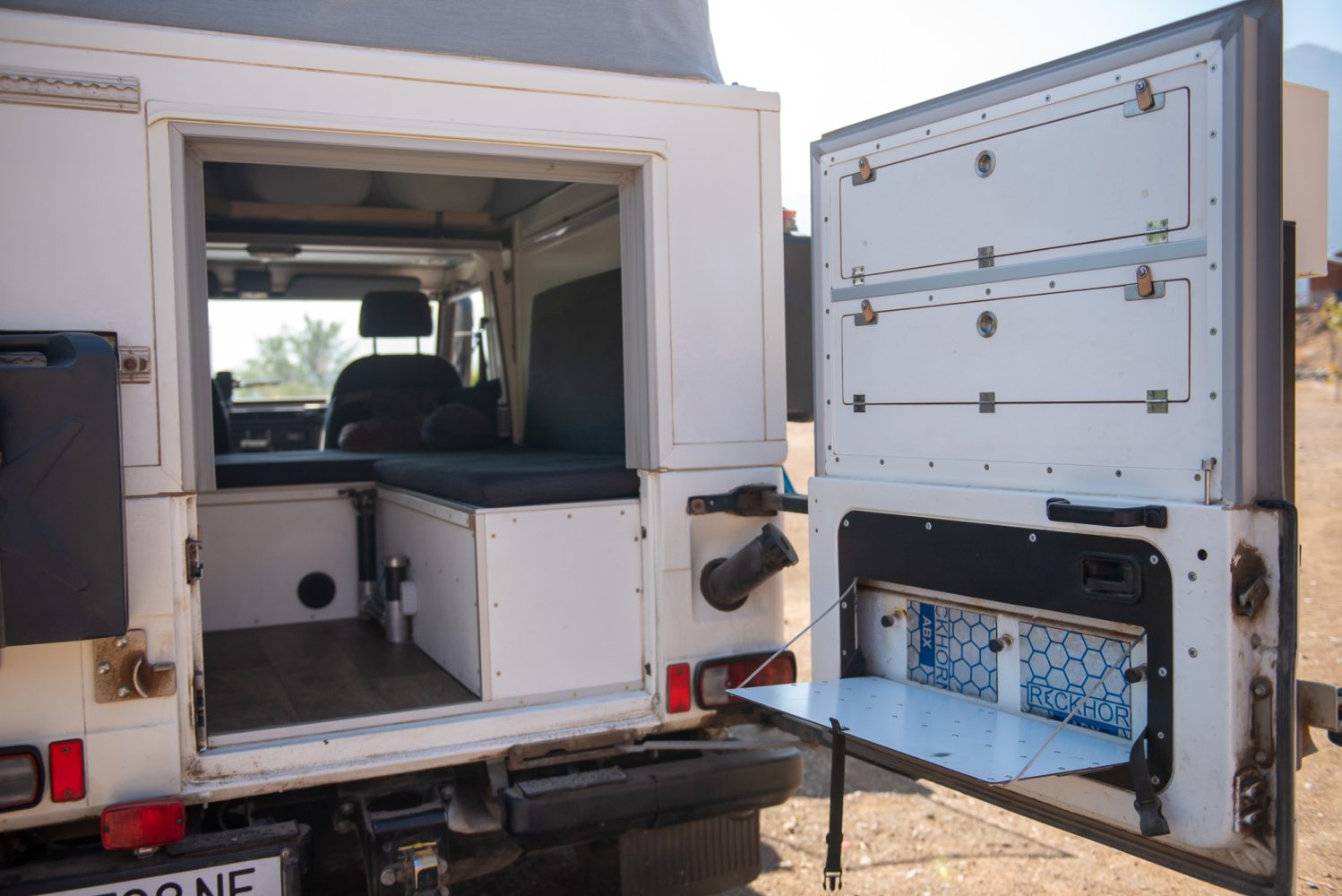
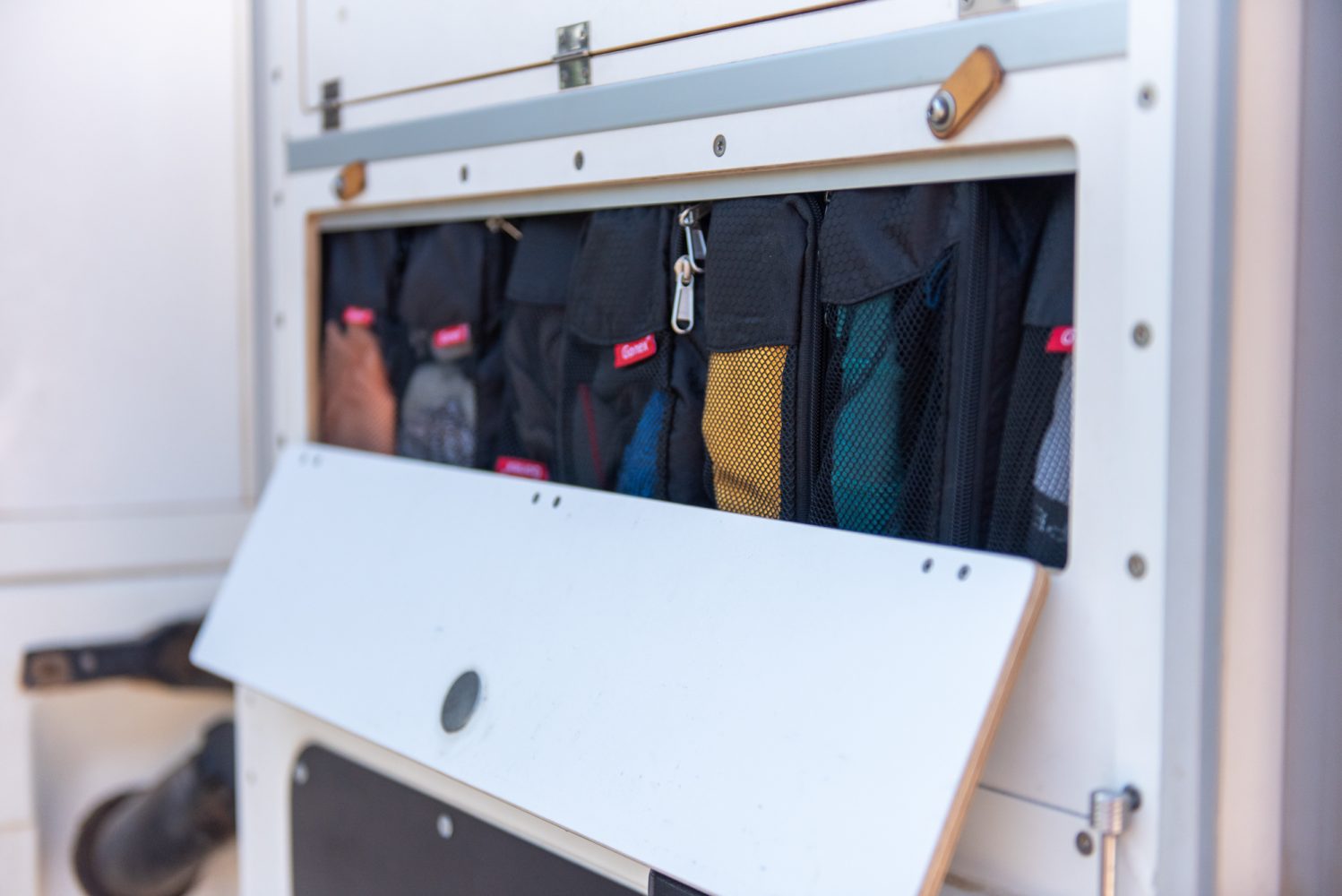

Tools and Spare Parts
“A whole seat box in the cabin is filled with spare parts, oils, special tools, and so on. Because of the weight, most spare parts are stowed in boxes behind the seats. There is enough space for our Viair 400 P 24-volt air compressor, which we are really happy with, but we would love to hardwire somewhere in the engine bay in the future.
The more ‘everyday’ tools like screwdrivers and wrenches are somewhat divided behind and under the driver’s seat and in a small toolbox in the engine compartment. All the rescue material is stowed in the spare wheel on the rear door. This all takes up a lot of space, but we have already needed some of it and were happy to repair so much by ourselves without being dependent on others.”
Solar and Electronics
“There is a small compartment behind the driver’s seat with all the electronics, an additional lithium battery (24-volt, 50Ah), fridge compressor, DC to DC charger, and inverter. Unfortunately, we don’t have solar panels yet, as we didn’t have time before our departure. This is one of the things that we will retrofit in the future. Surprisingly, we manage very well without them in the meantime.
We bought soft organizers to store our electronics, cables, and camera accessories to keep everything in order. Otherwise, they are just in a compartment behind the driver’s seat so that we can get to the things quickly from the front and the back.
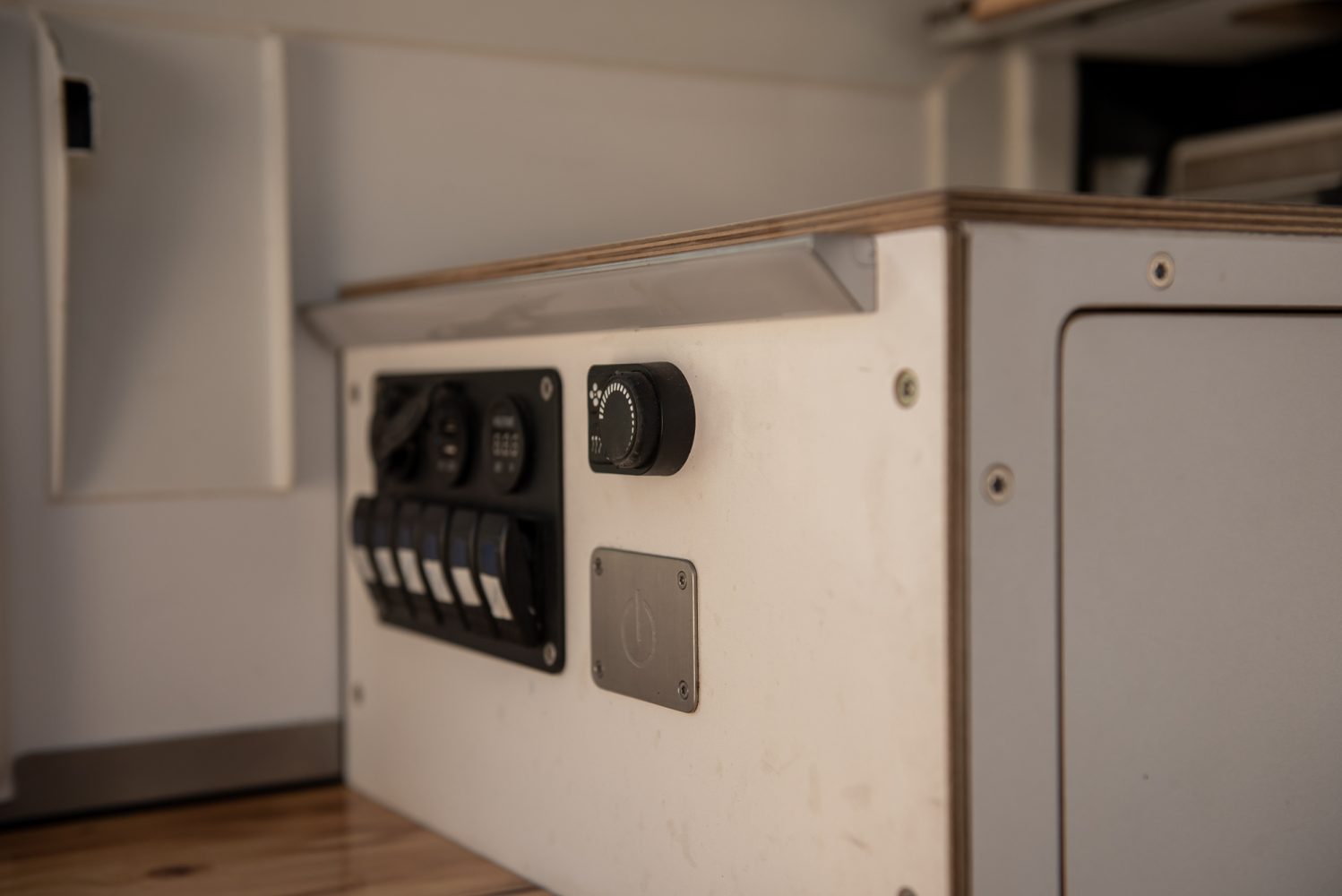

At first, we weren’t sure if we should install fixed interior lights, but this was the best decision ever. In addition, we have sockets everywhere for reading lamps or chargers, but the large lights make the room very bright and cozy.
And we wouldn’t want to miss our diesel heater (Planar 2D, 2 kW diesel heater), which allowed us to stay in our car even in winter when we were stuck in Ushuaia for 11 months.”
Miscellaneous Gear
“Climbing and skiing gear probably takes up the most space in our car. One of the big seat boxes in the cabin is filled with mountaineering equipment like rope, crampons, helmets, harnesses, a stove, a tent, and sleeping mats. Things that we use less often, such as the ice screws, very thick gloves, and our thick down jackets, have been moved under the food supplies. Our car is too small to store big things like skis, mountain boots, and ski boots inside. Therefore, we have an additional aluminum box on the roof to take it all with us.”
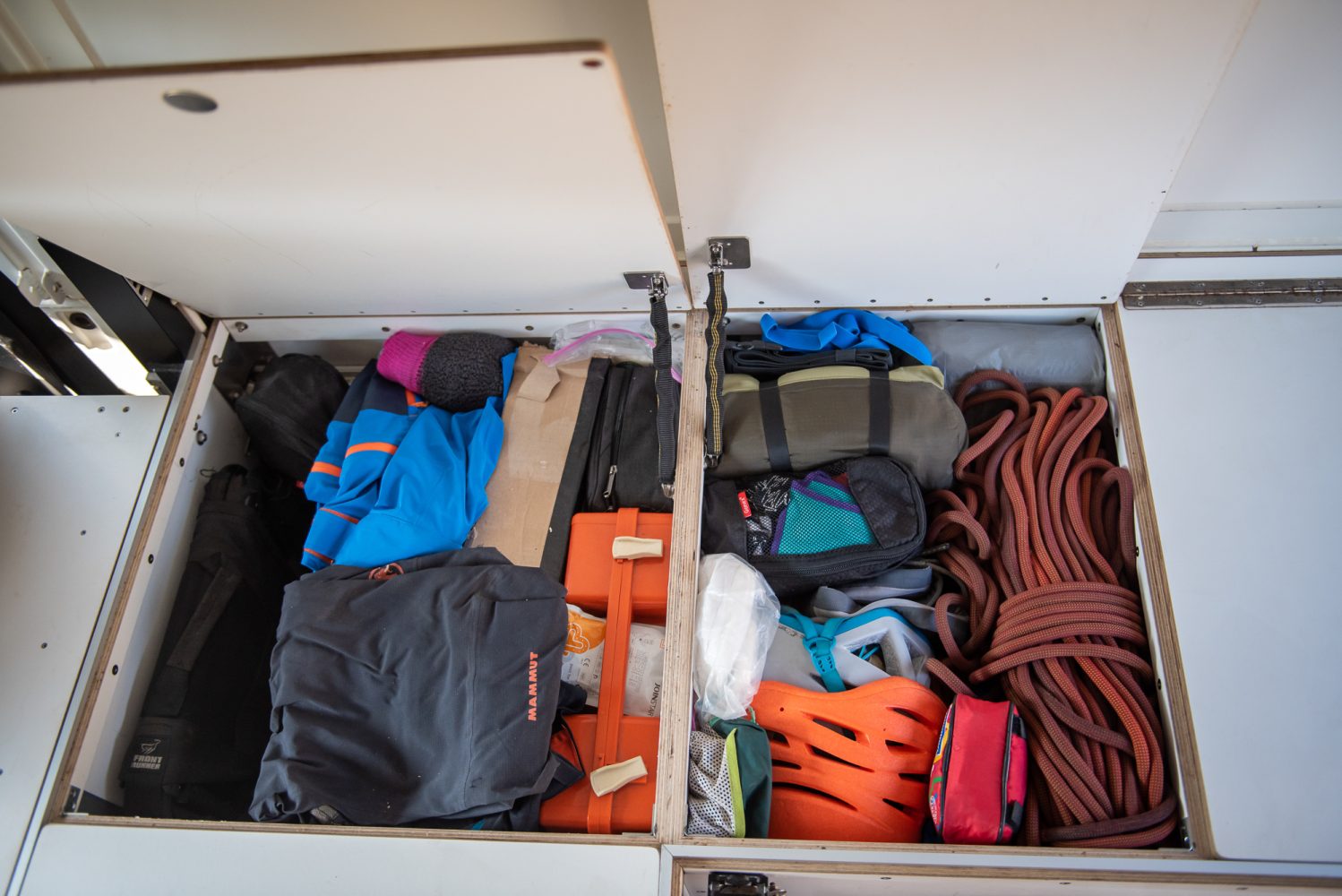
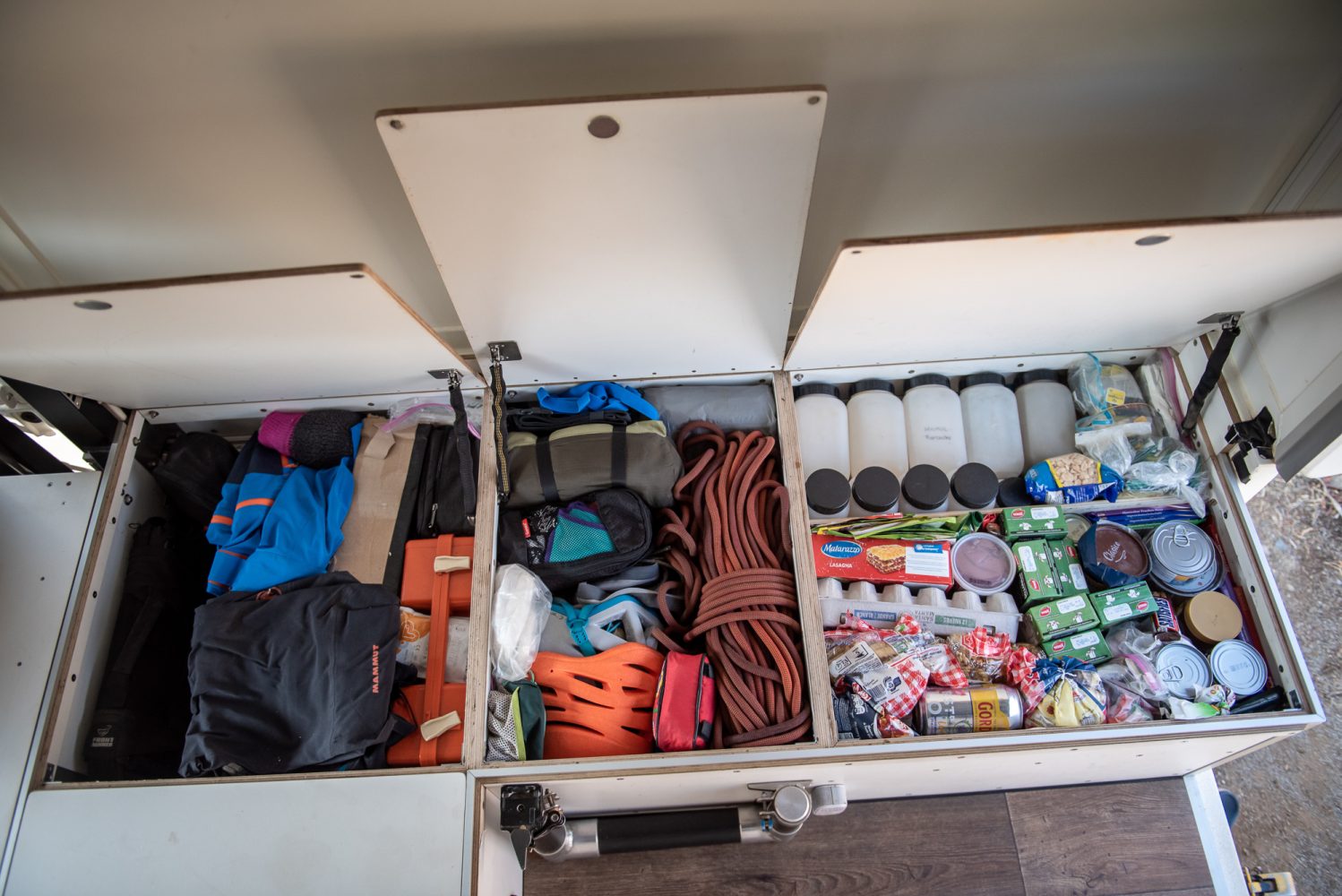
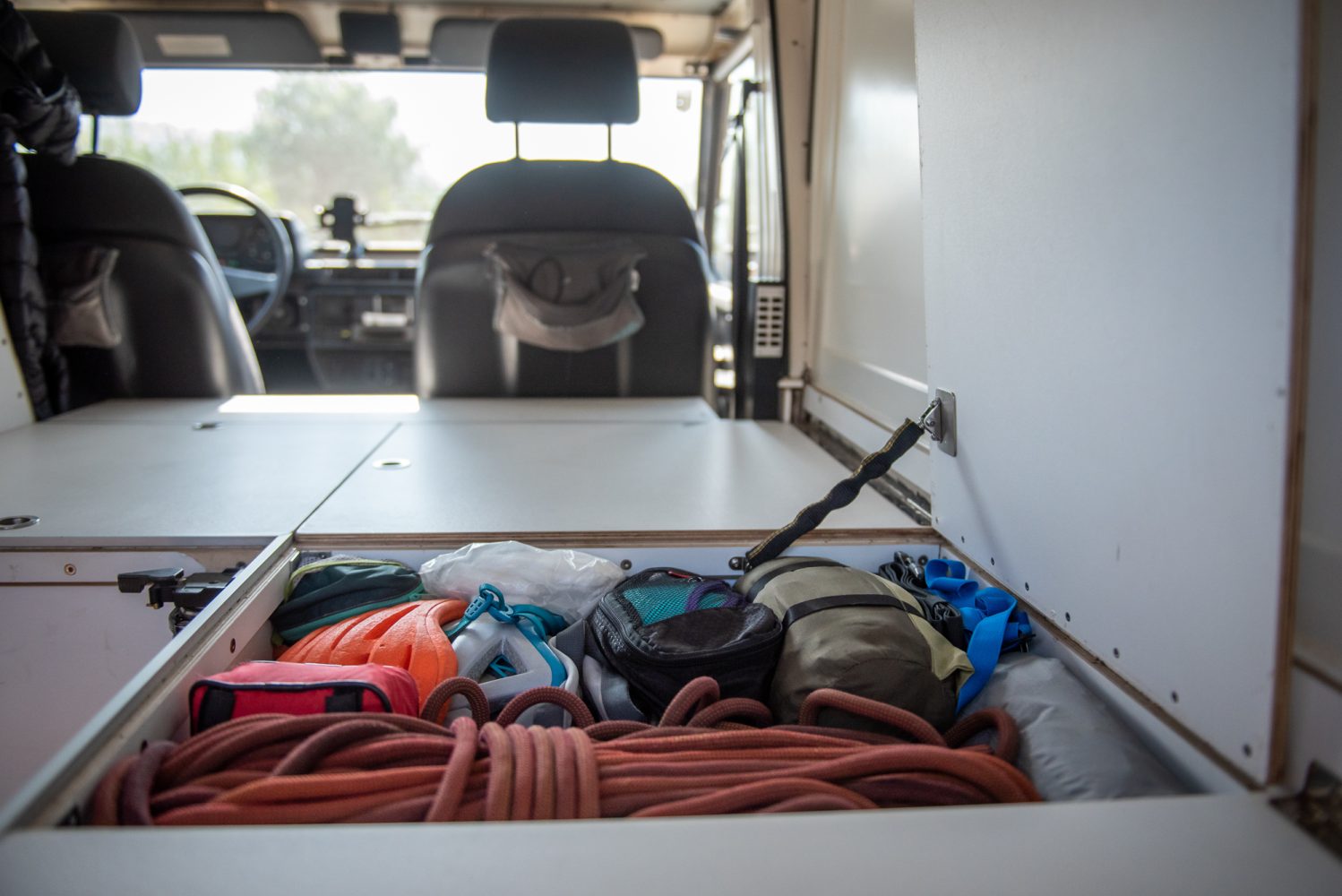
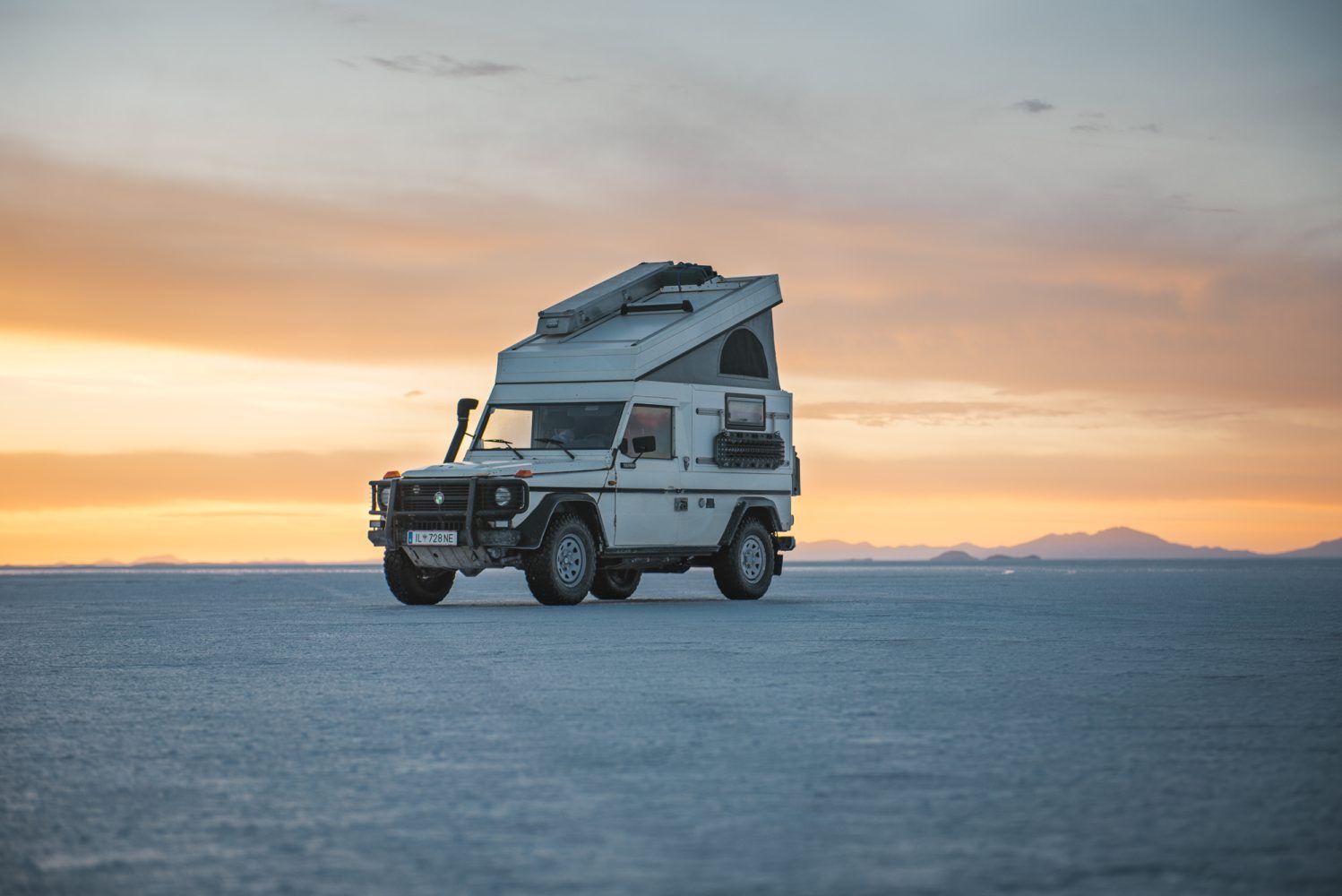
Specifications: 1998 Puch 290 GD Mercedes G-Wagon
- Carinthia sleeping bags
- Two-burner propane stove
- Stainless steel cookware
- Dometic Waeco refrigerator drawer
- Custom aluminum water tank, 45-liter
- Insulated stainless steel hot water tank in the front fender
- Two 20-liter Front Runner jerry cans
- MSR water filter
- Front Runner foldable chairs
- Decathlon table
- Viair 400 P 24-volt air compressor
- Lithium battery, 24-volt
- Fridge compressor
- DC to DC charger, inverter
- Planar 2D diesel heater
To learn more about Birgit and Klemens, visit 4x4panda.at or visit them on Instagram @4x4panda.at.
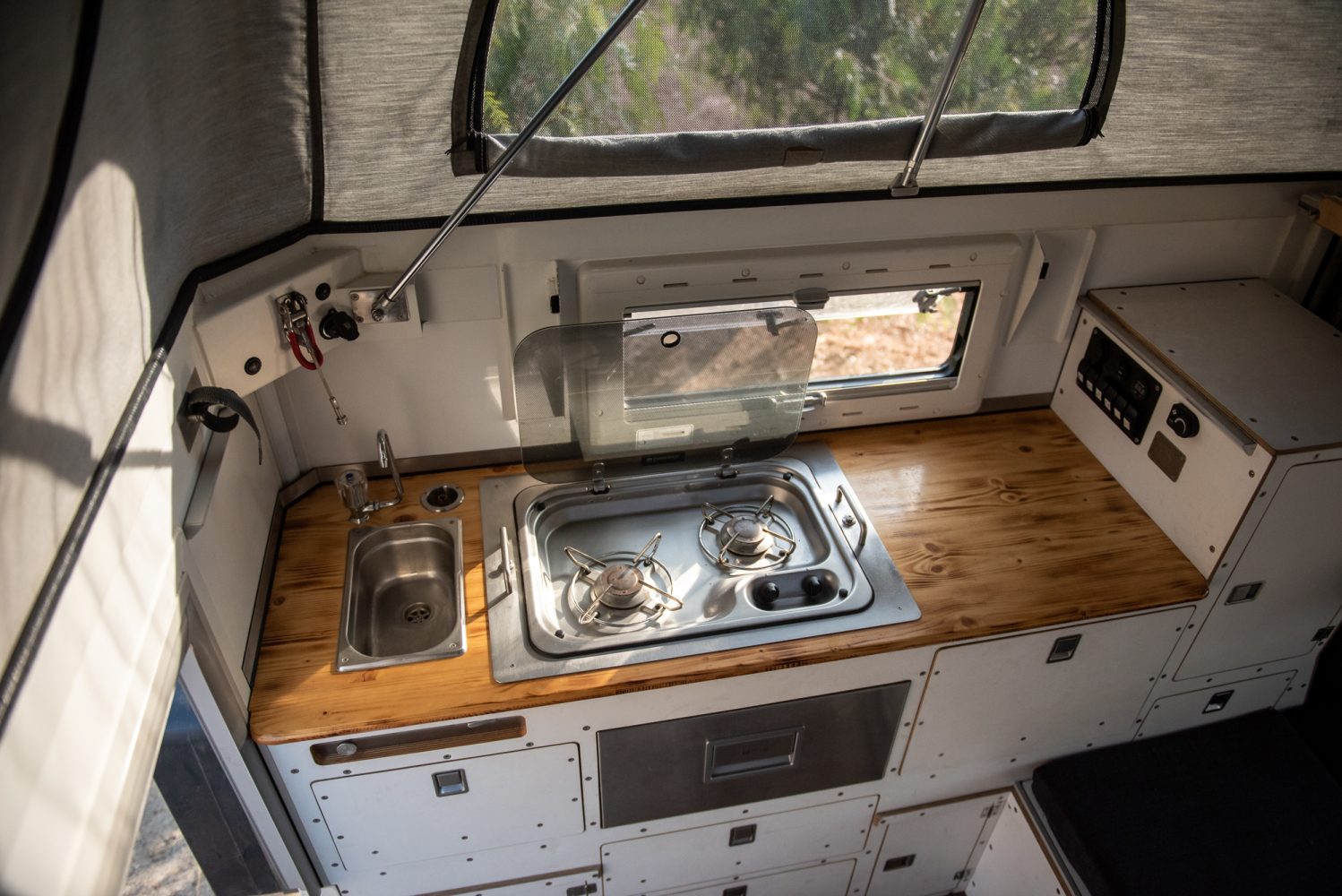
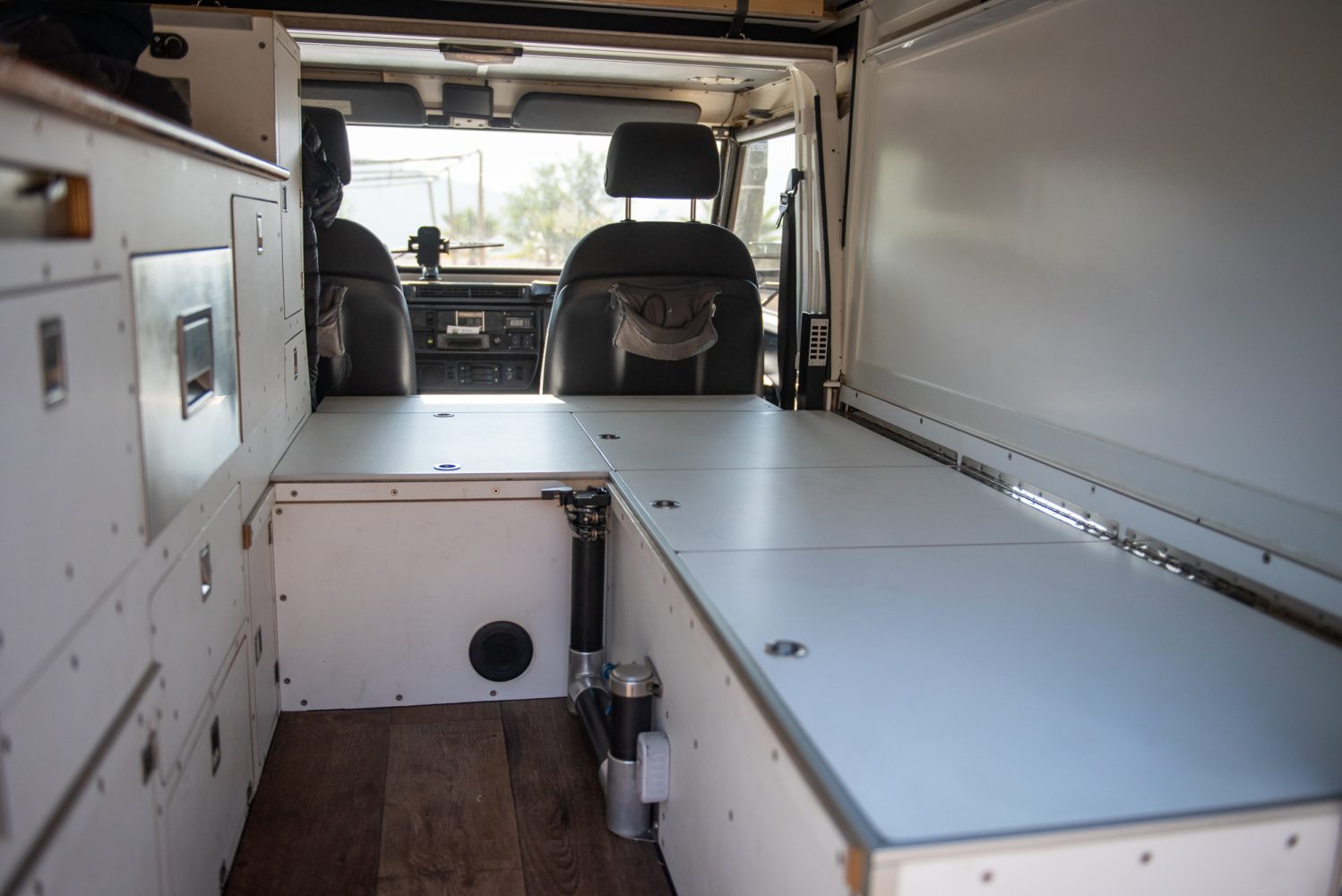
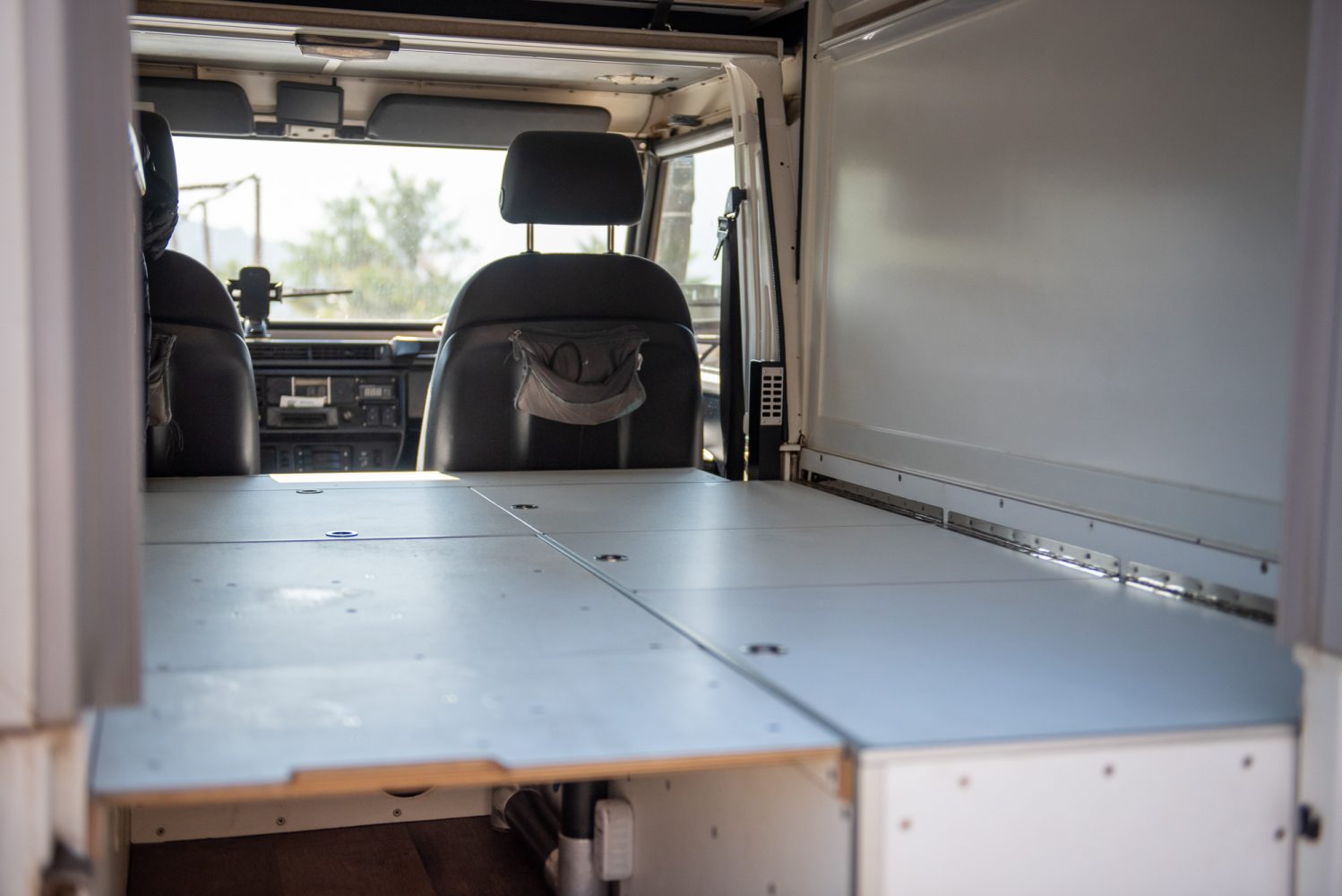
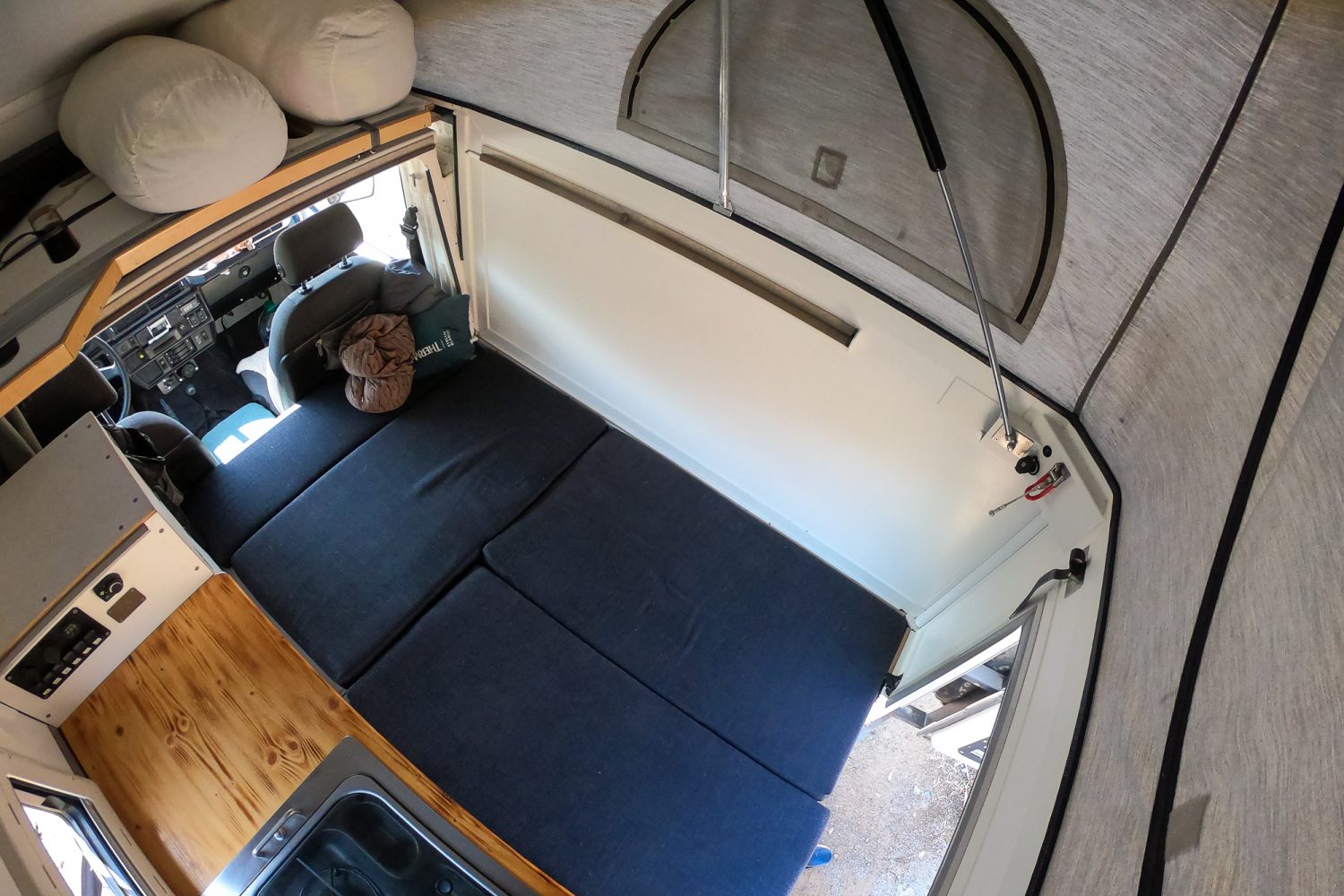
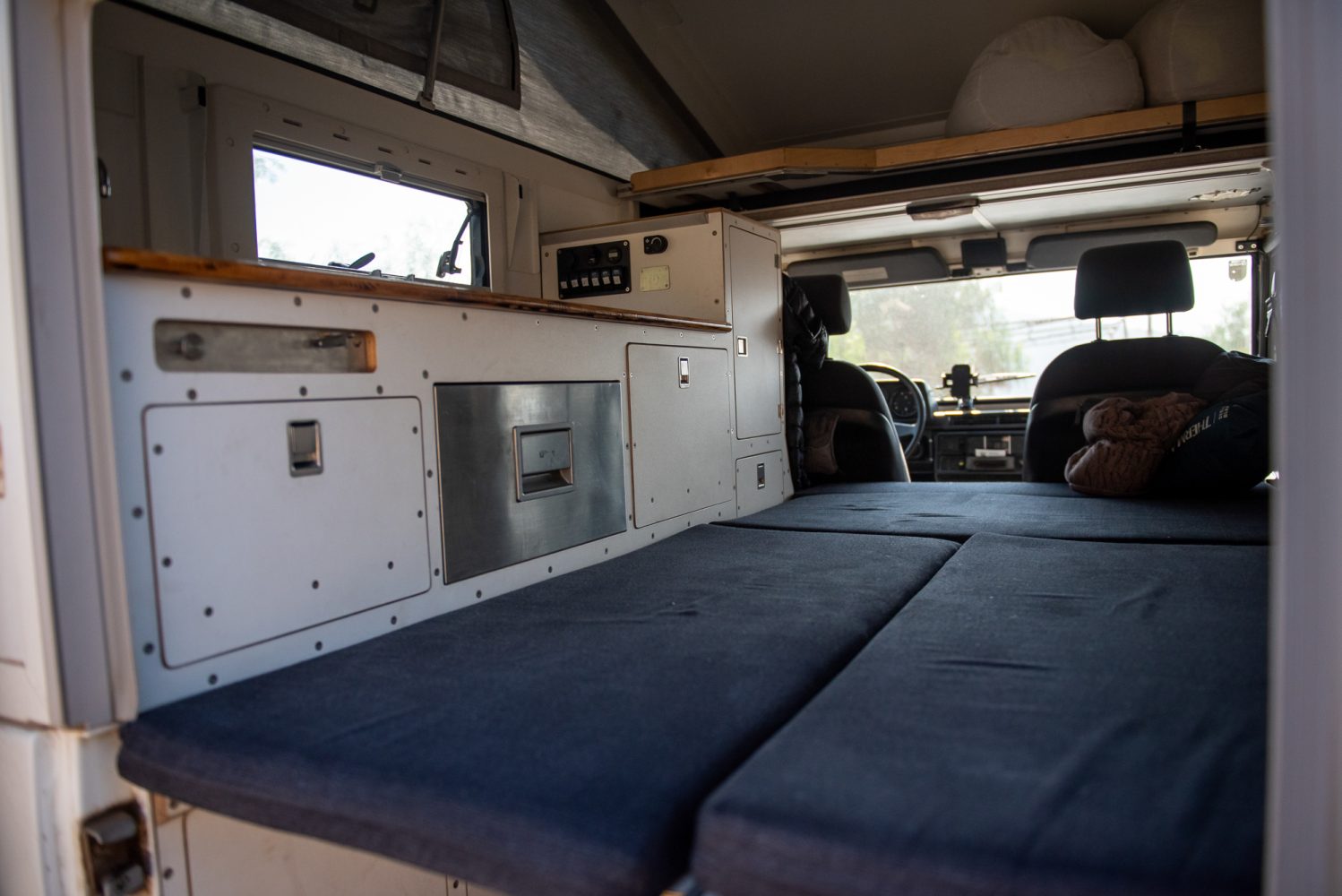
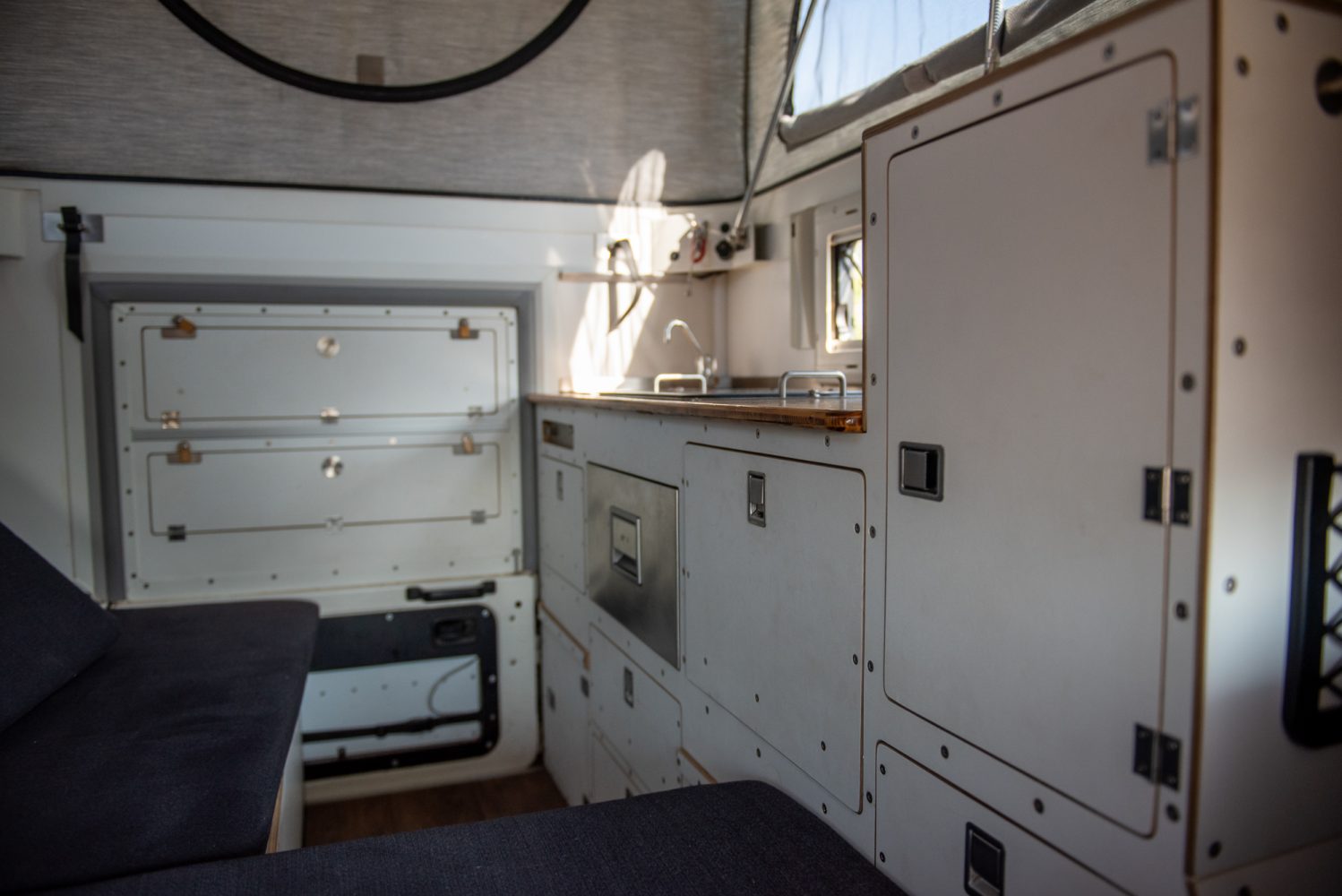
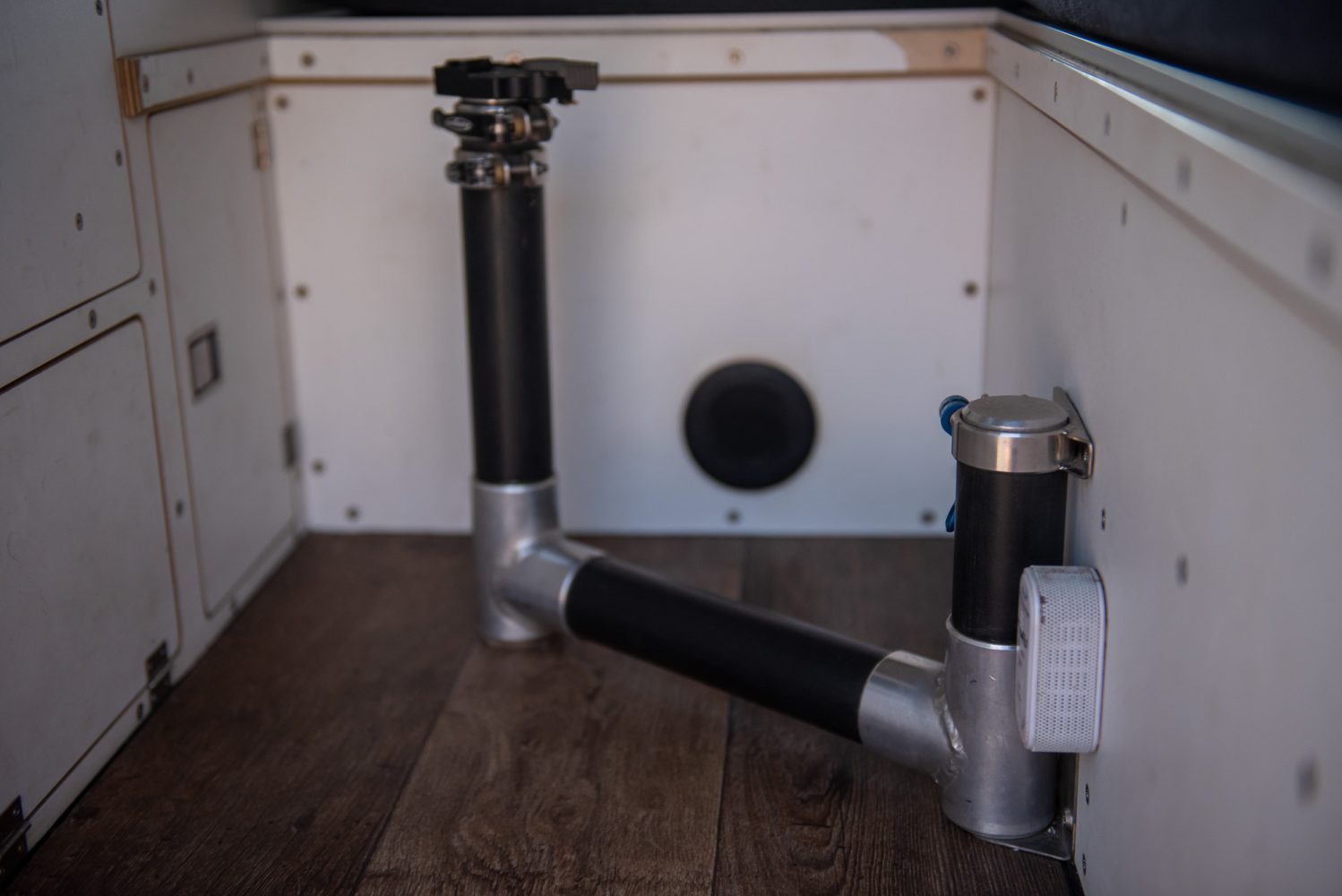
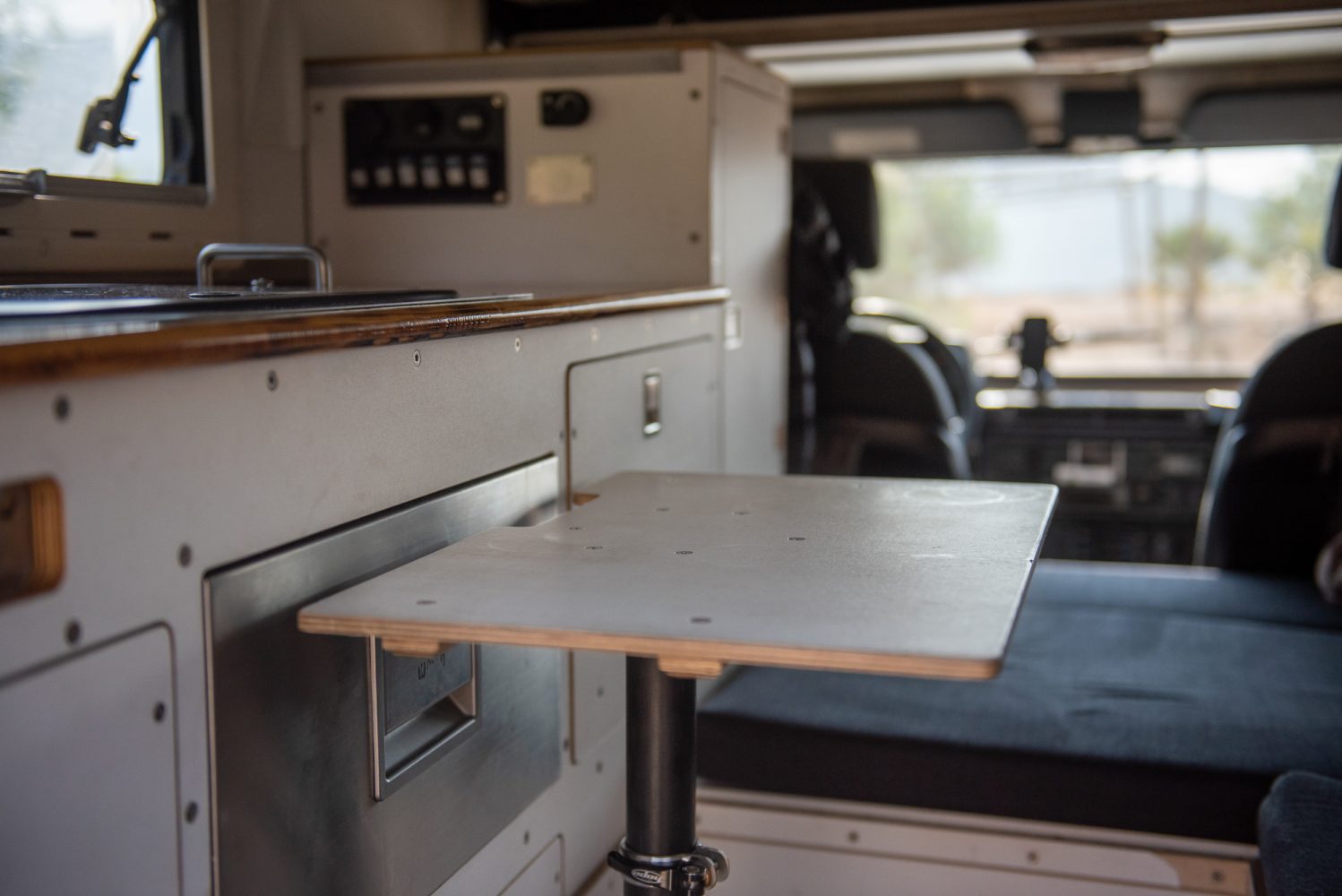
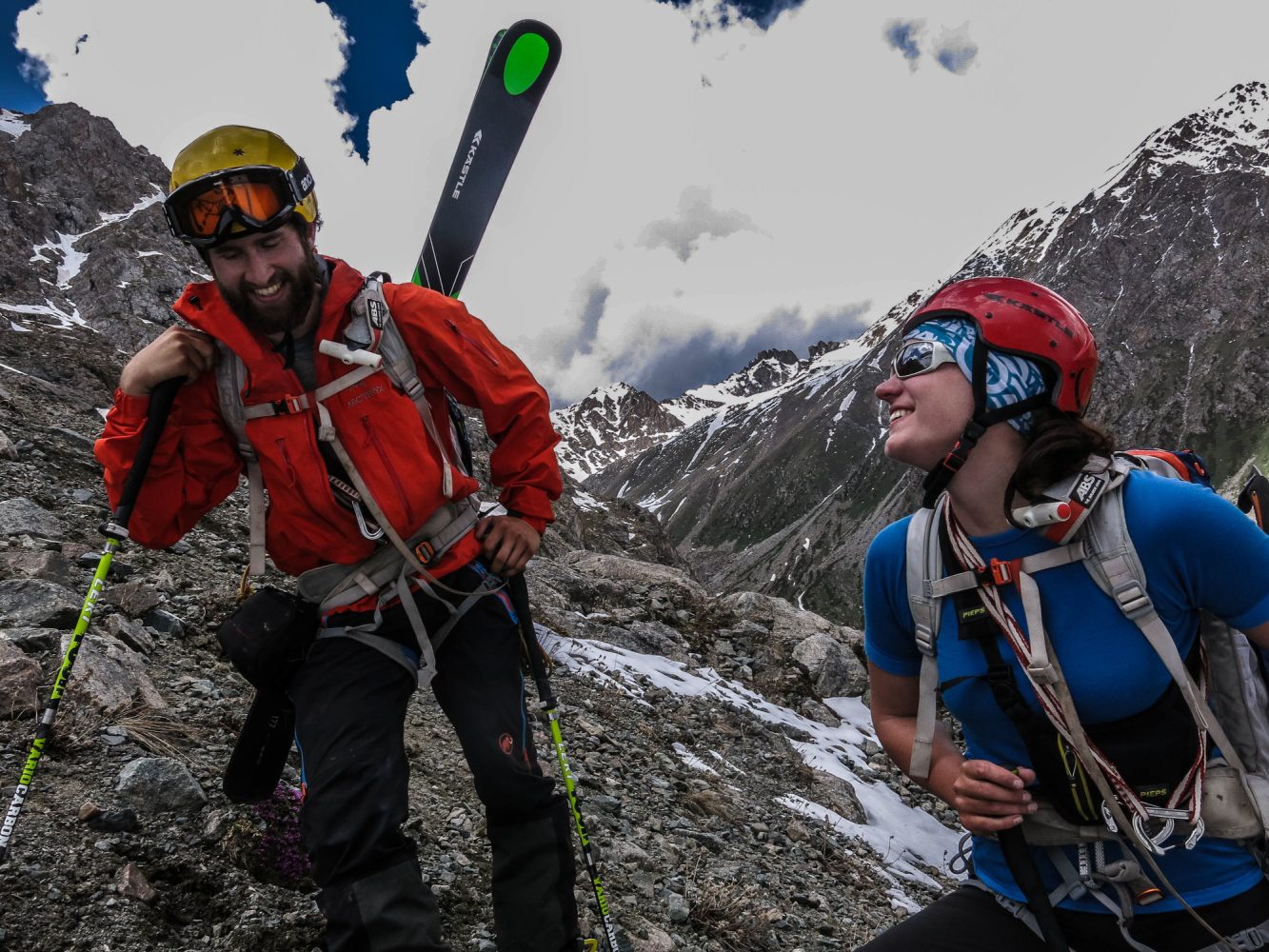
Read more: Featured Vehicle Interior :: Overland Site’s 2006 Toyota Land Cruiser Prado
Our No Compromise Clause: We carefully screen all contributors to ensure they are independent and impartial. We never have and never will accept advertorial, and we do not allow advertising to influence our product or destination reviews.


